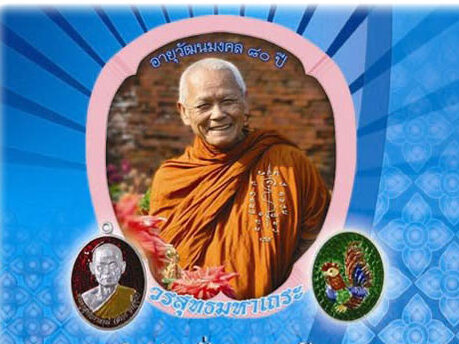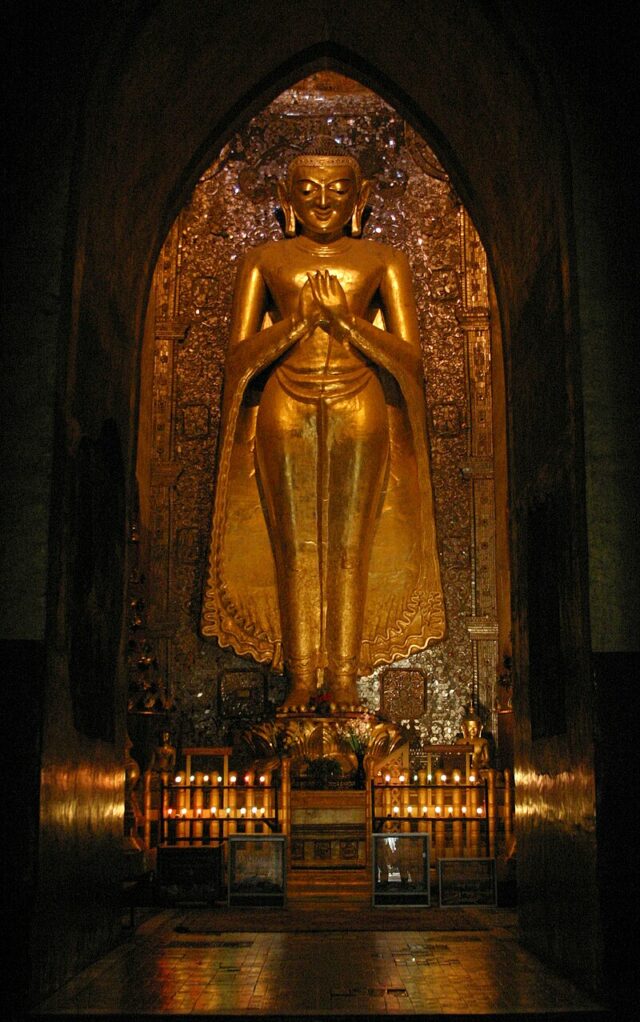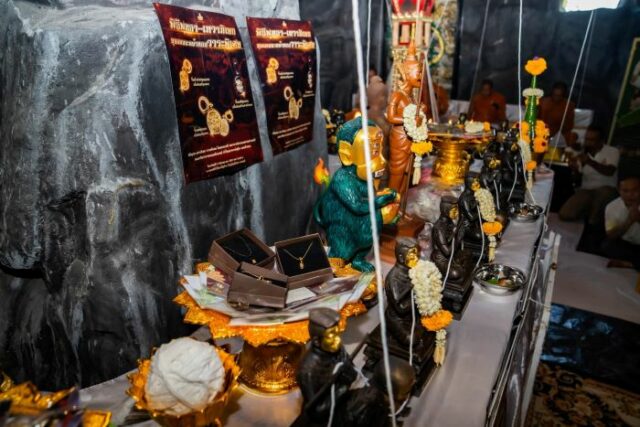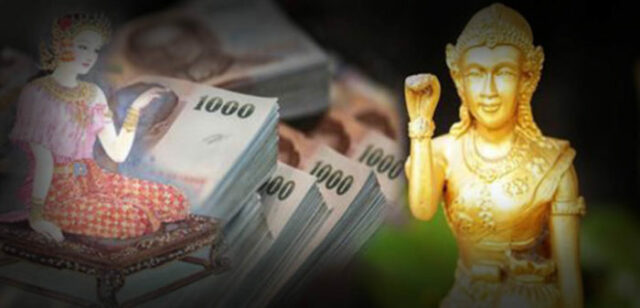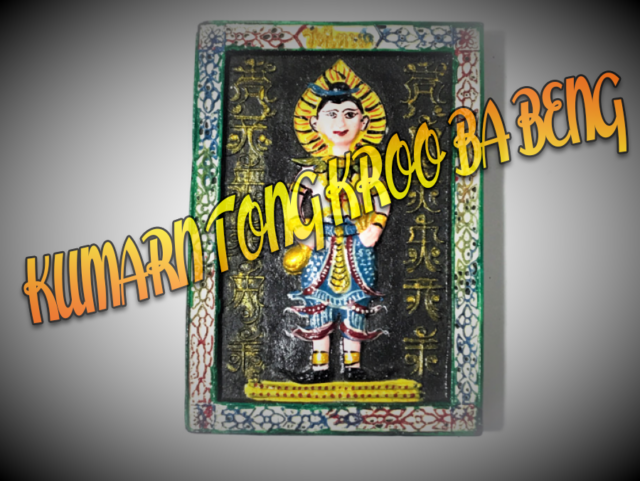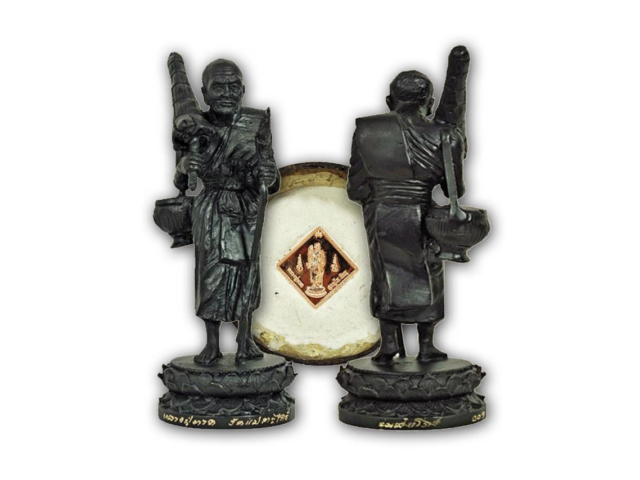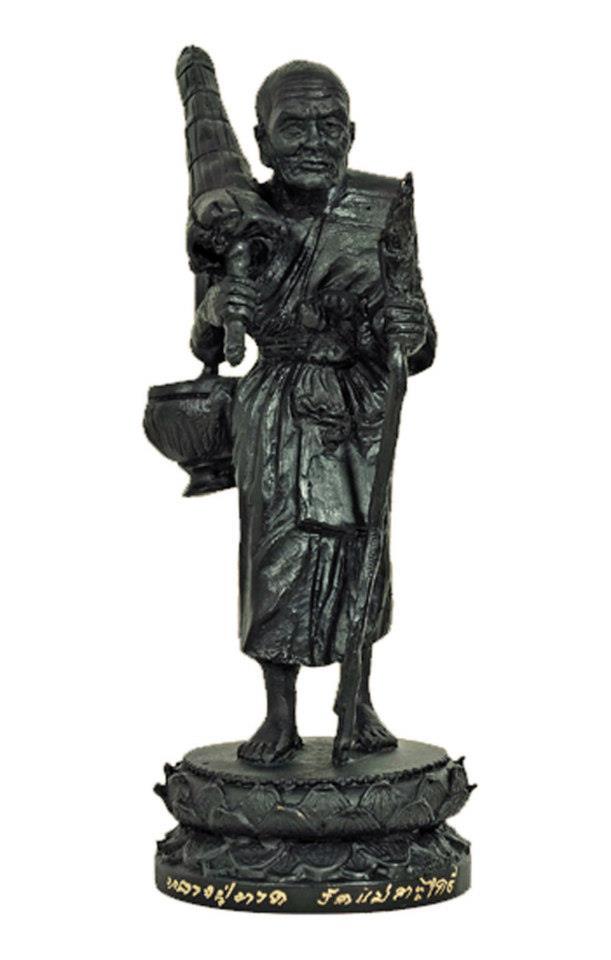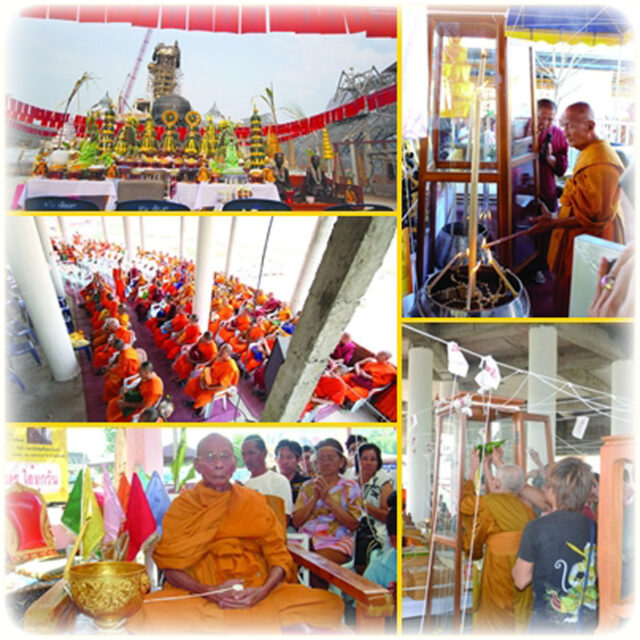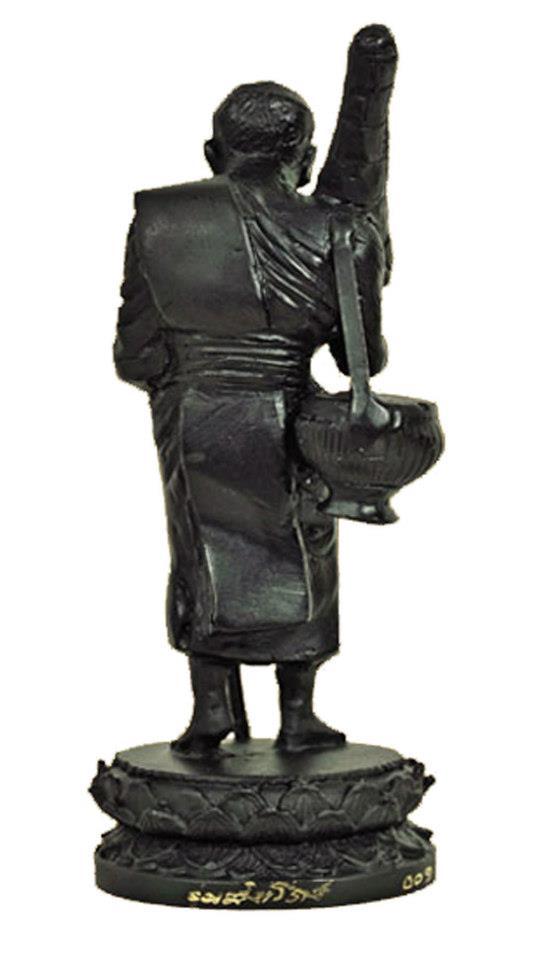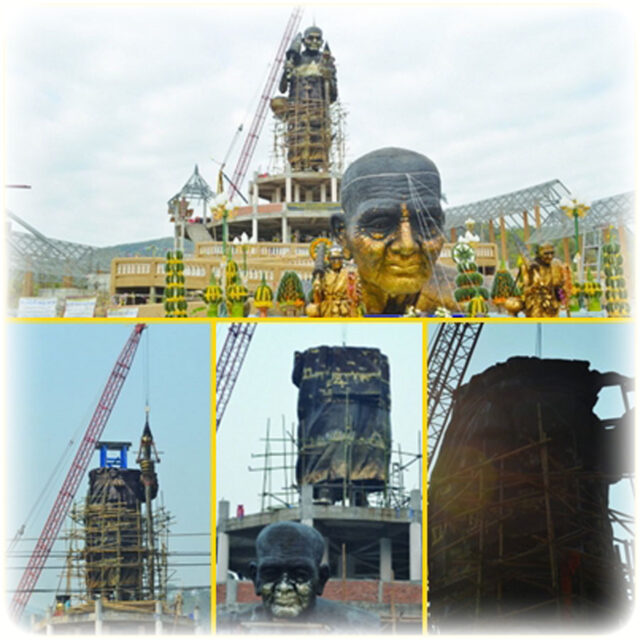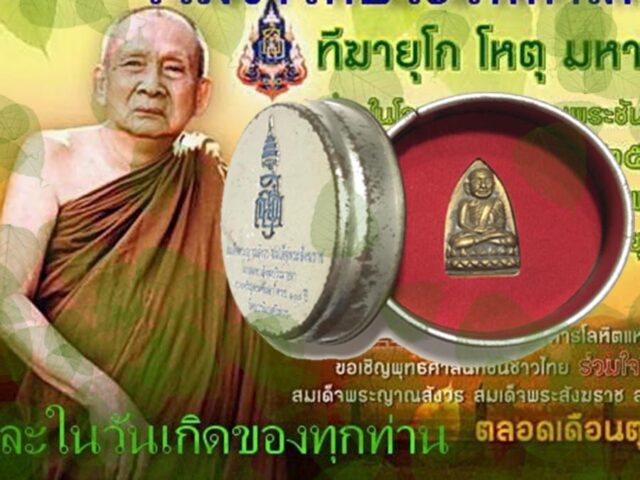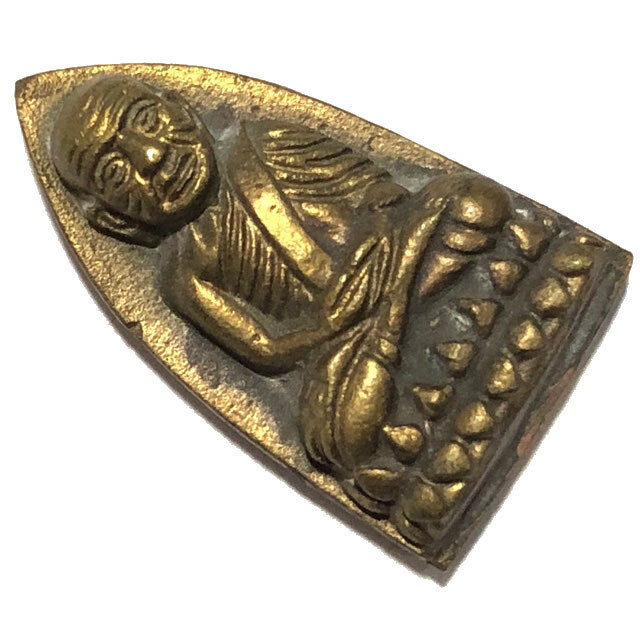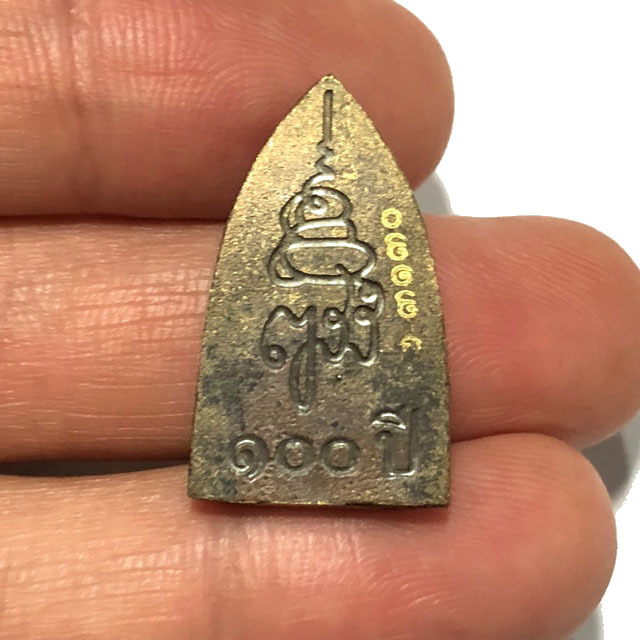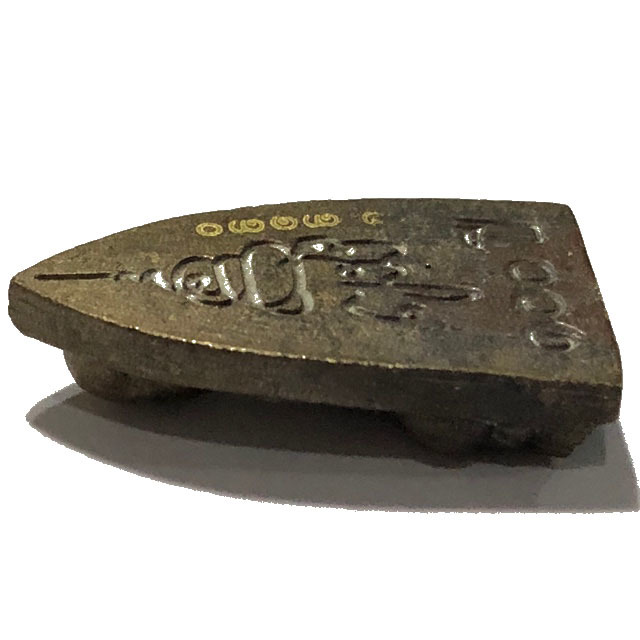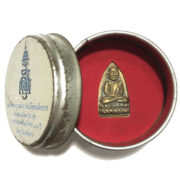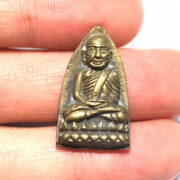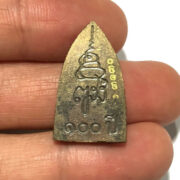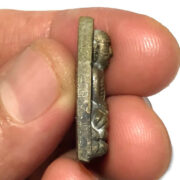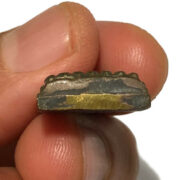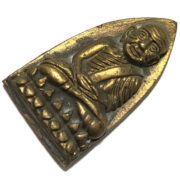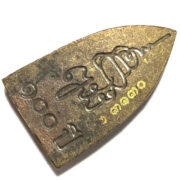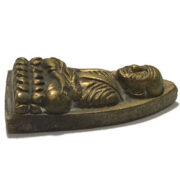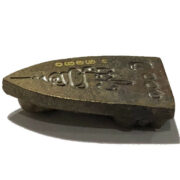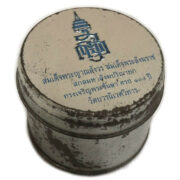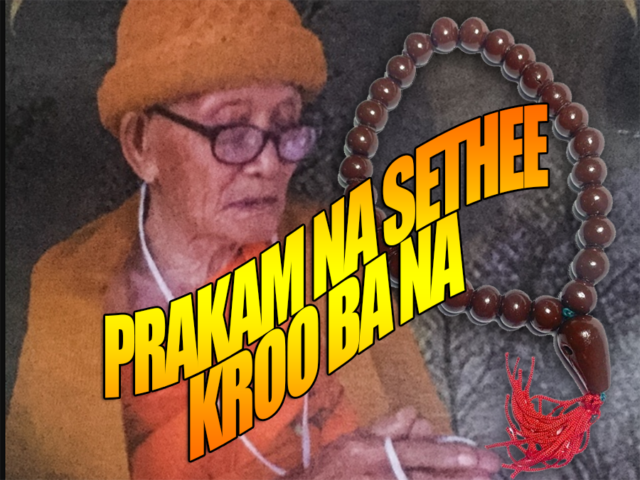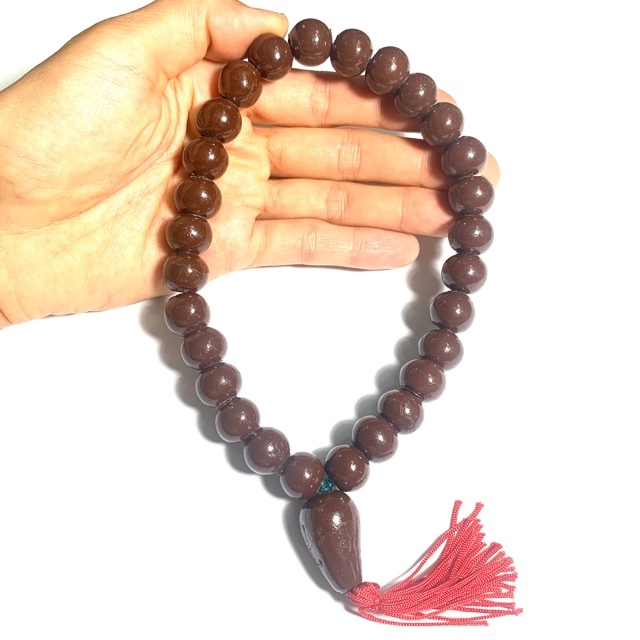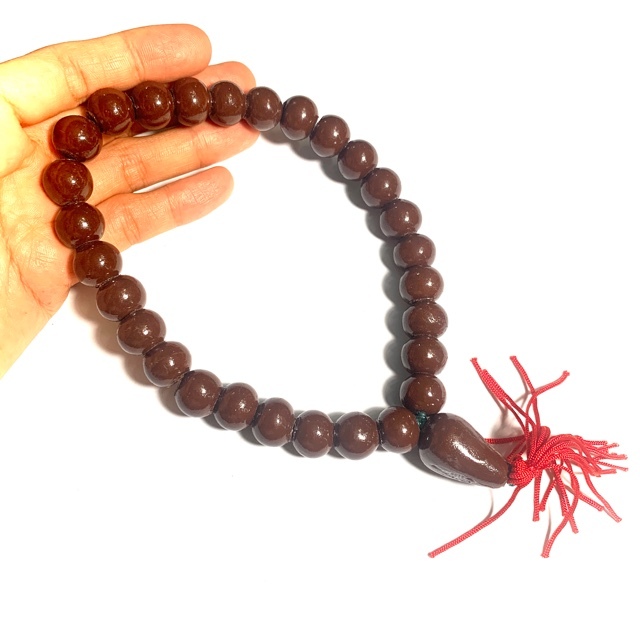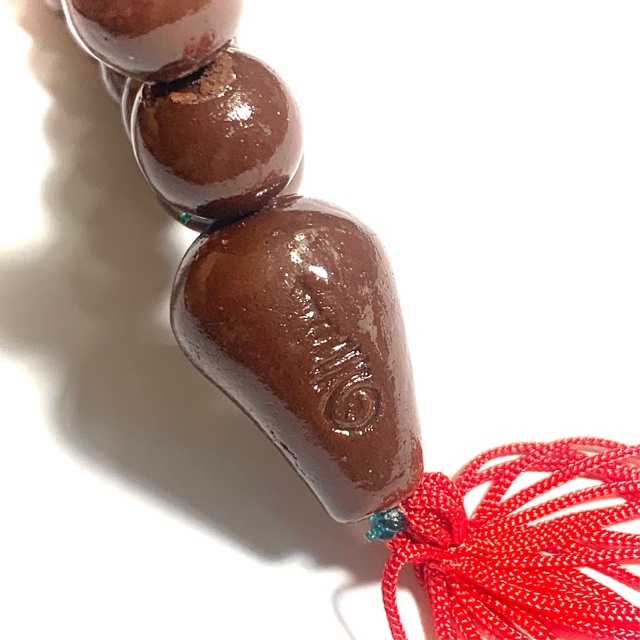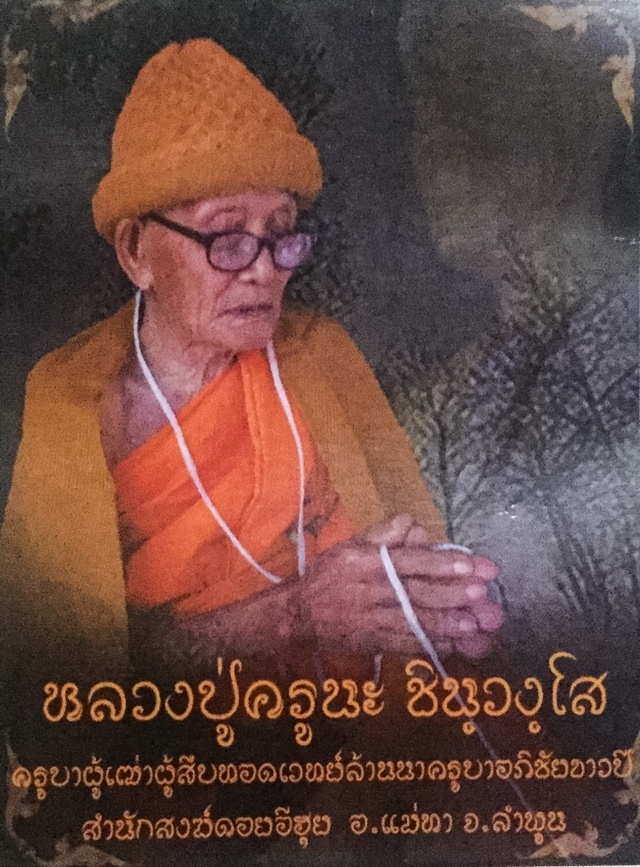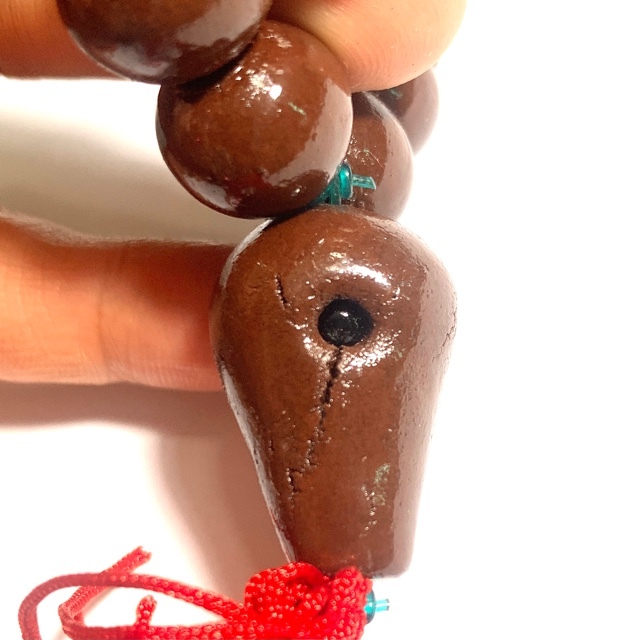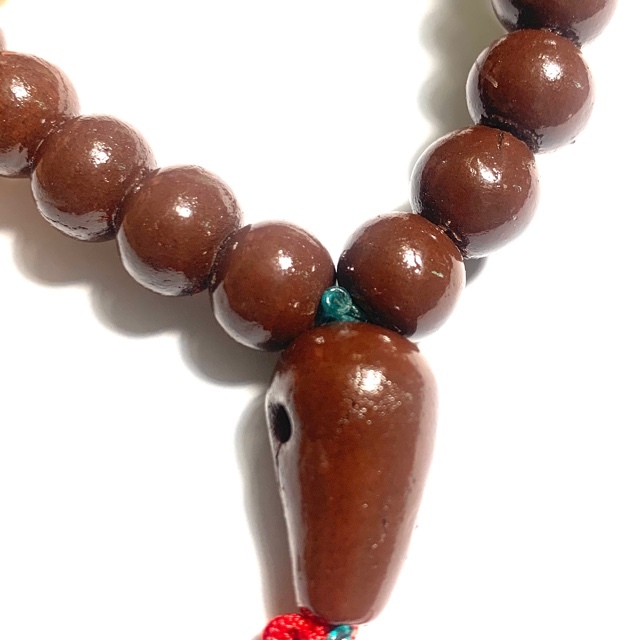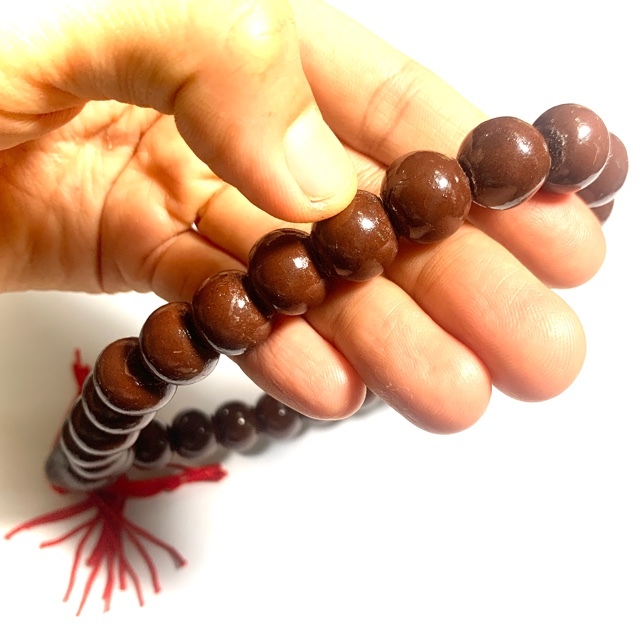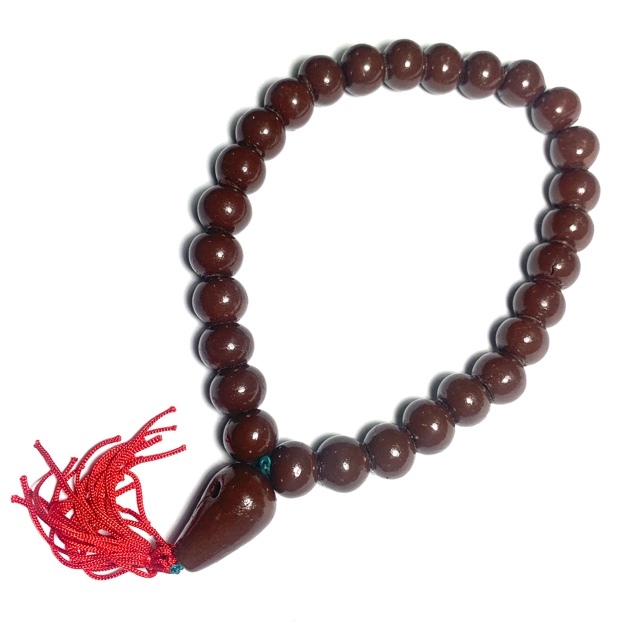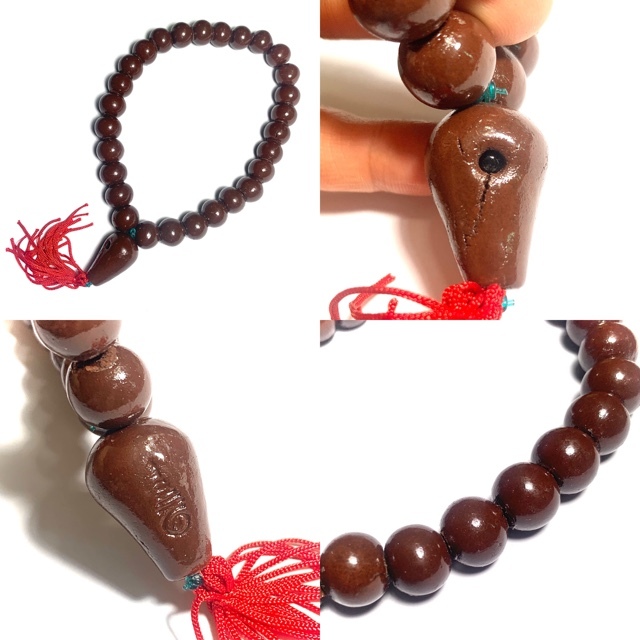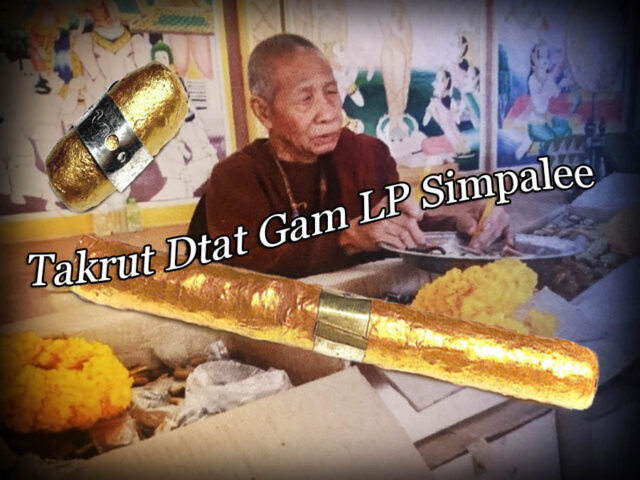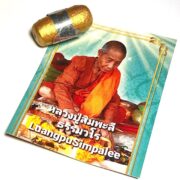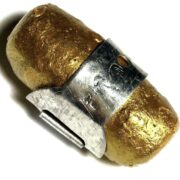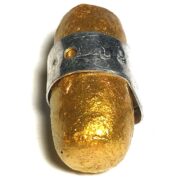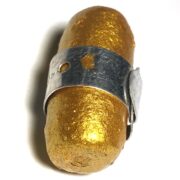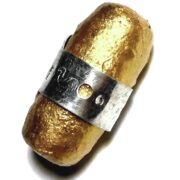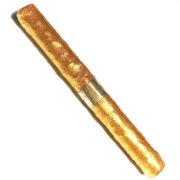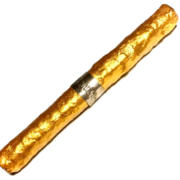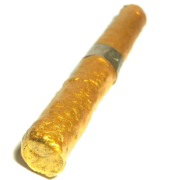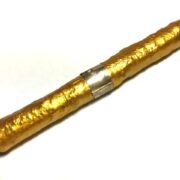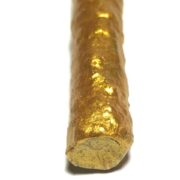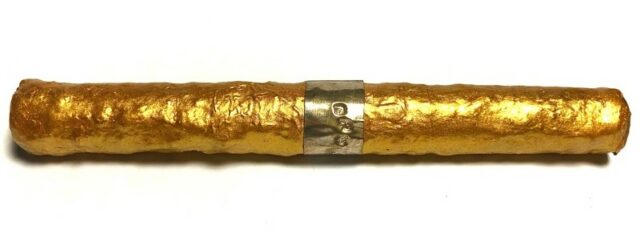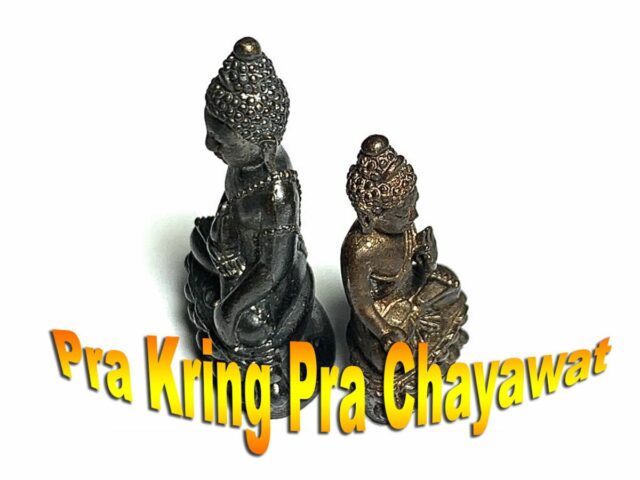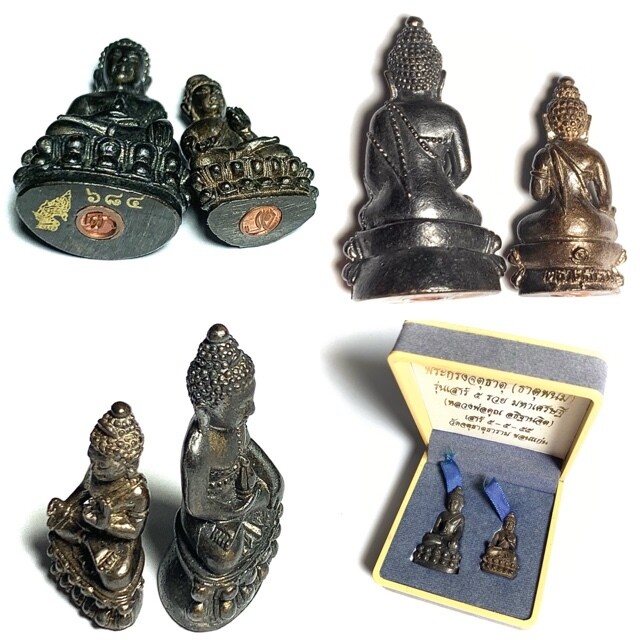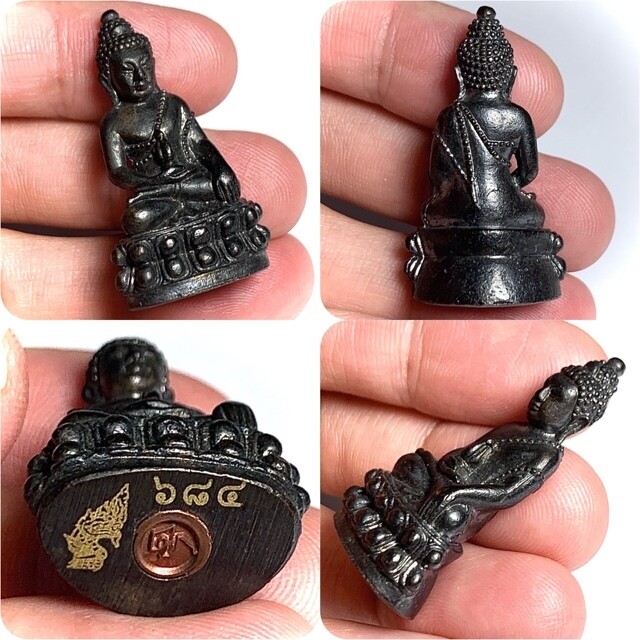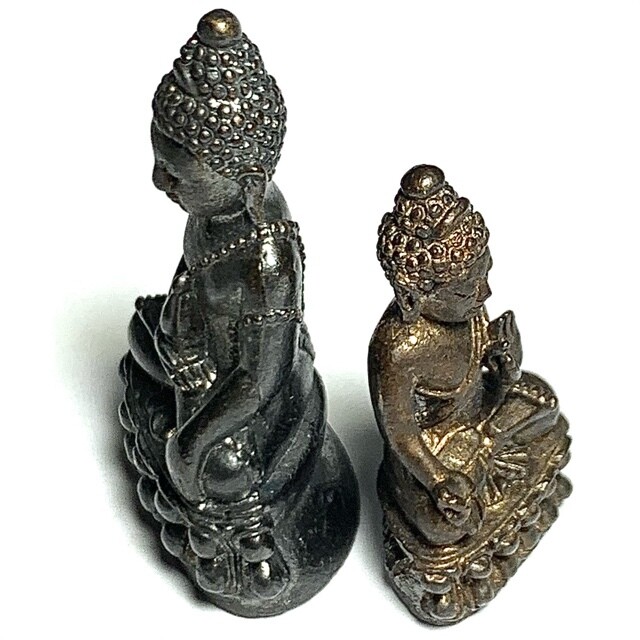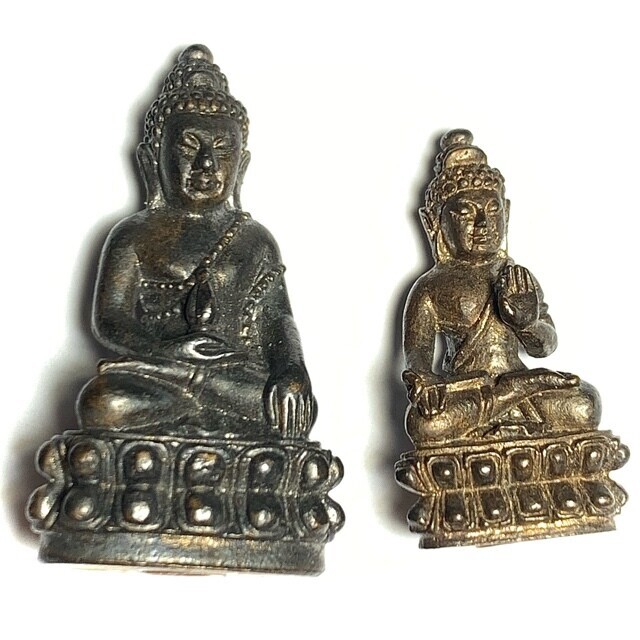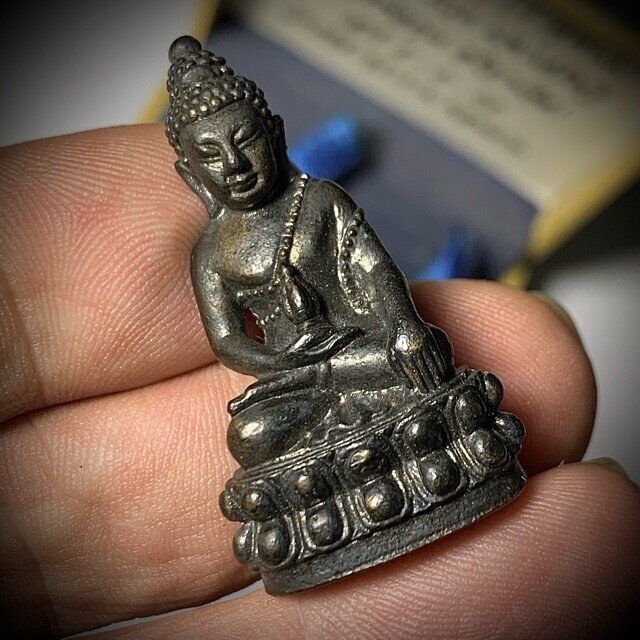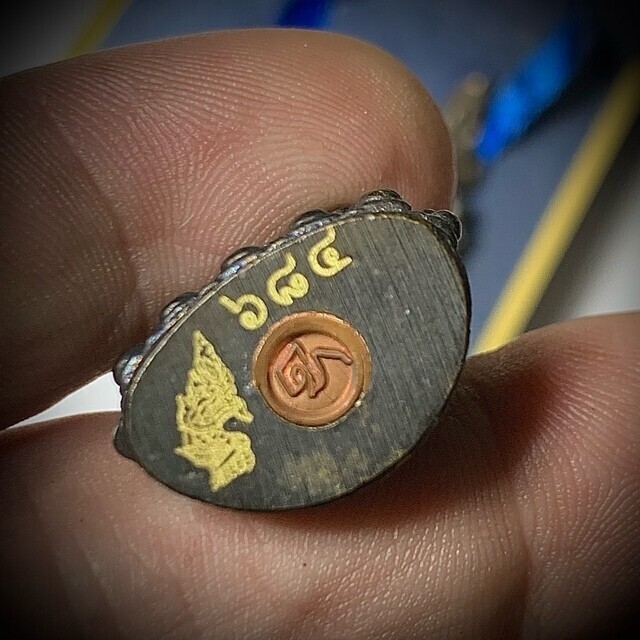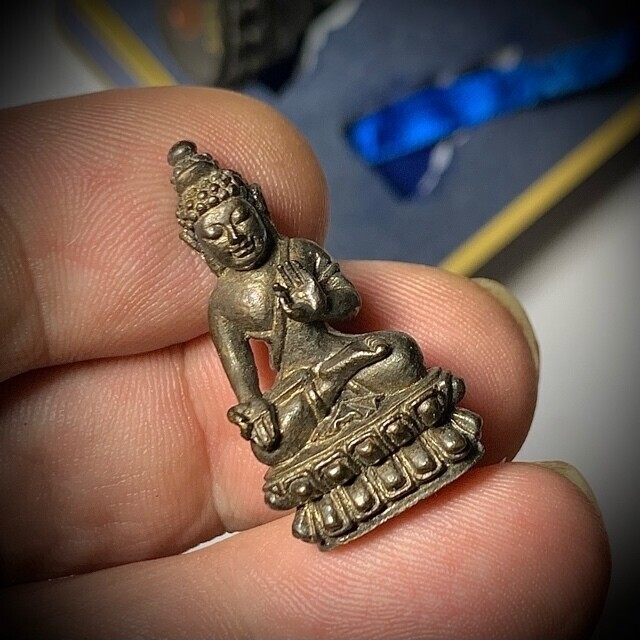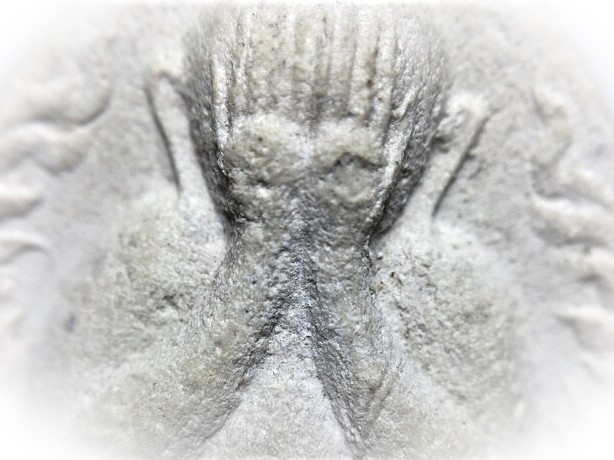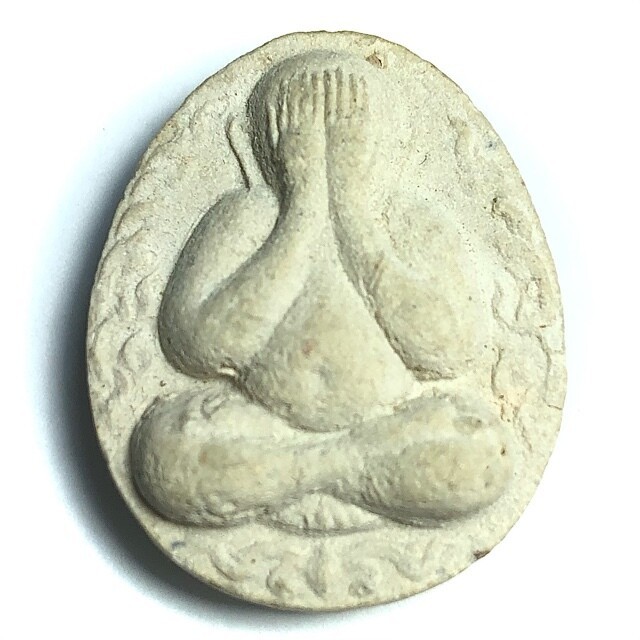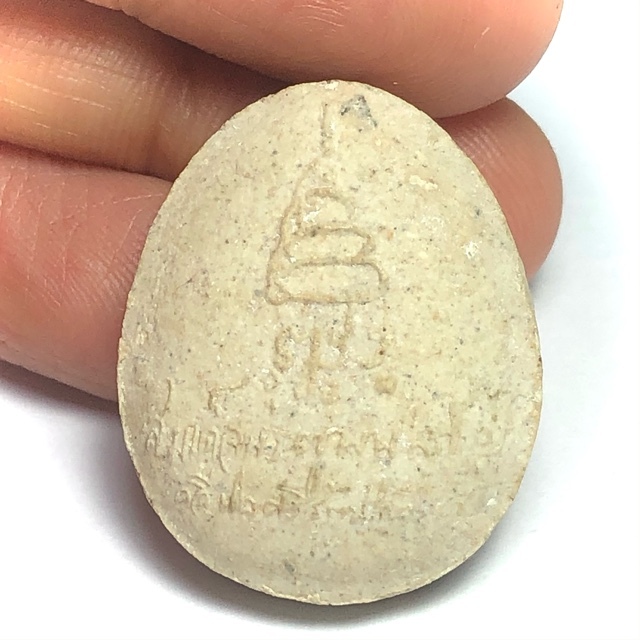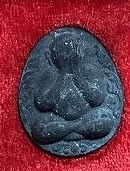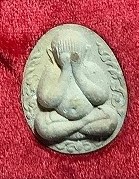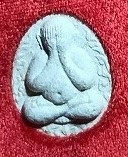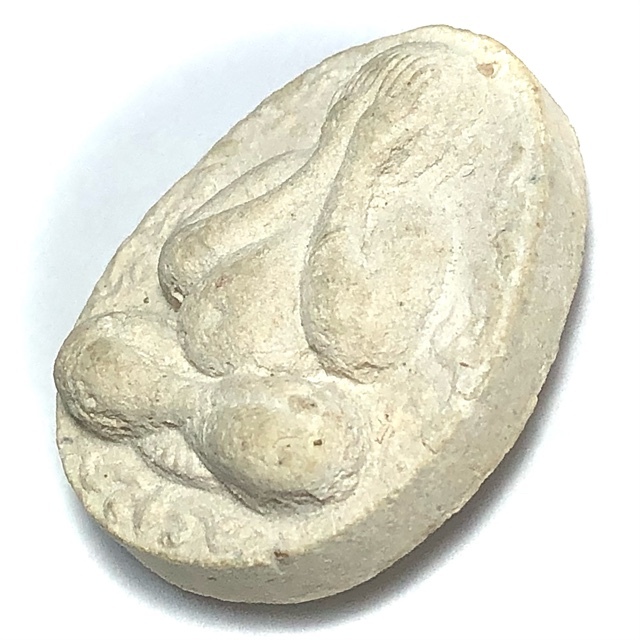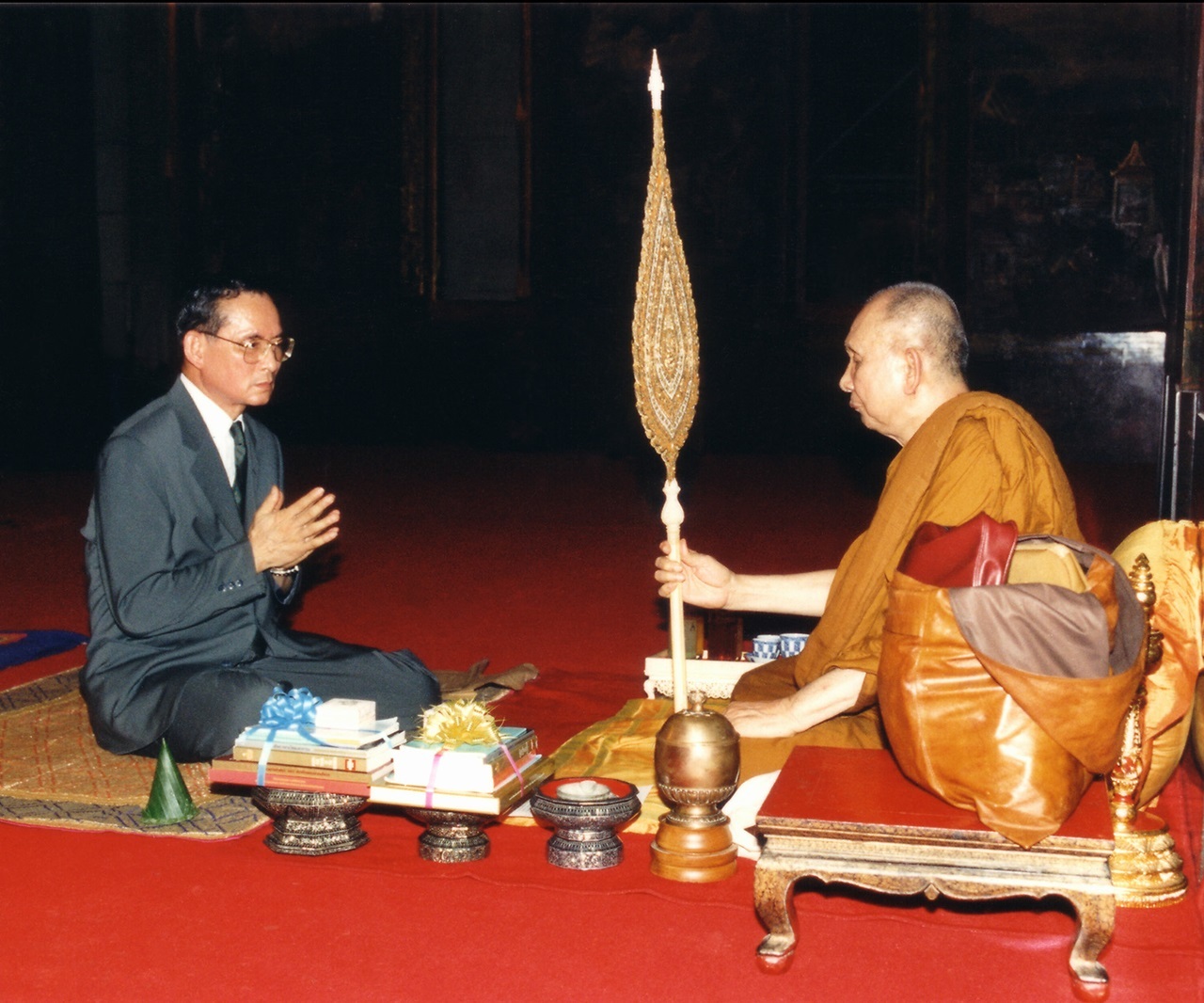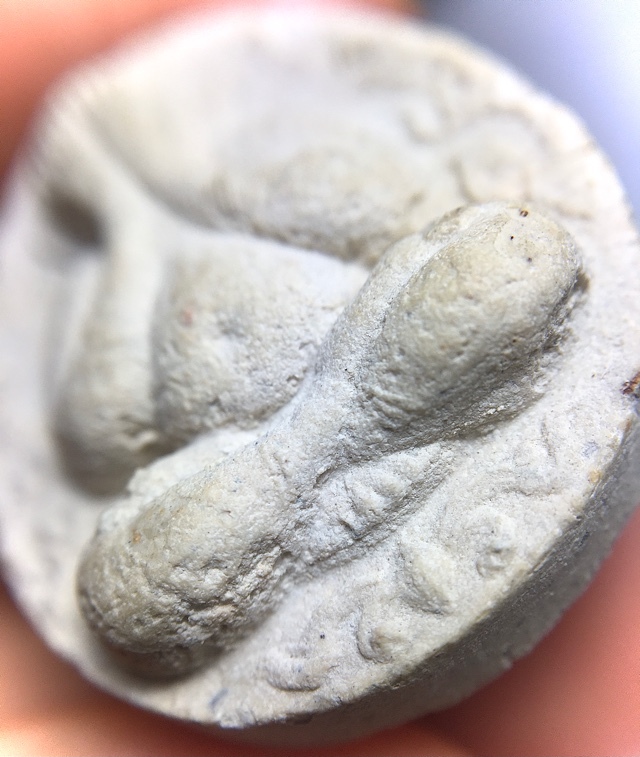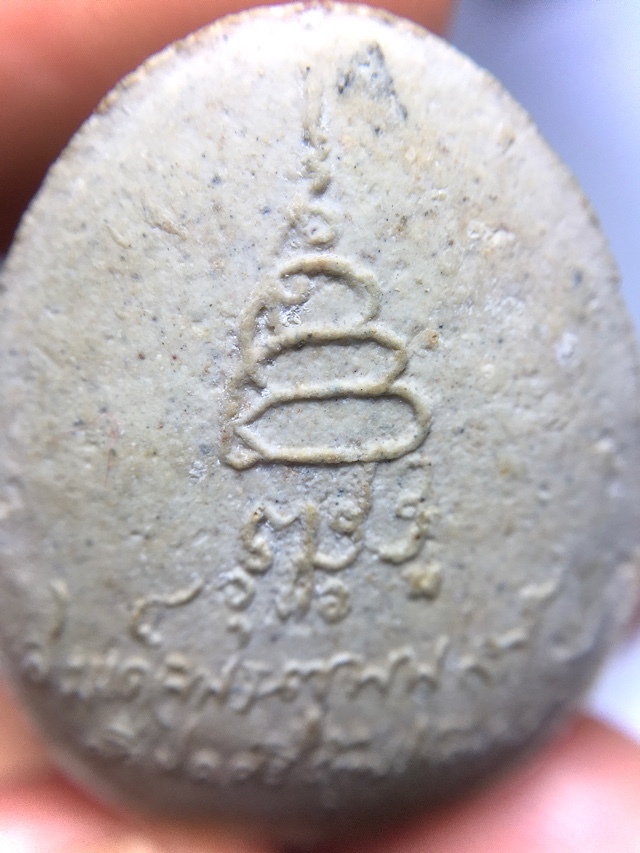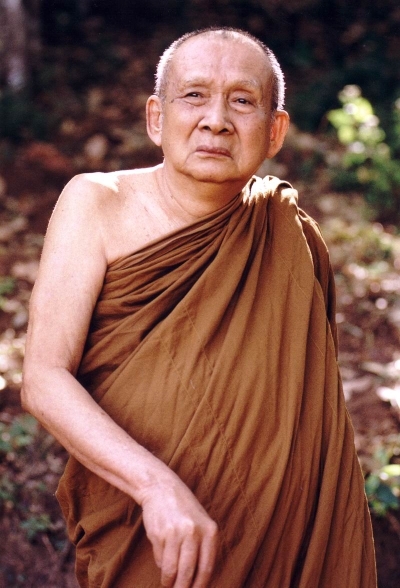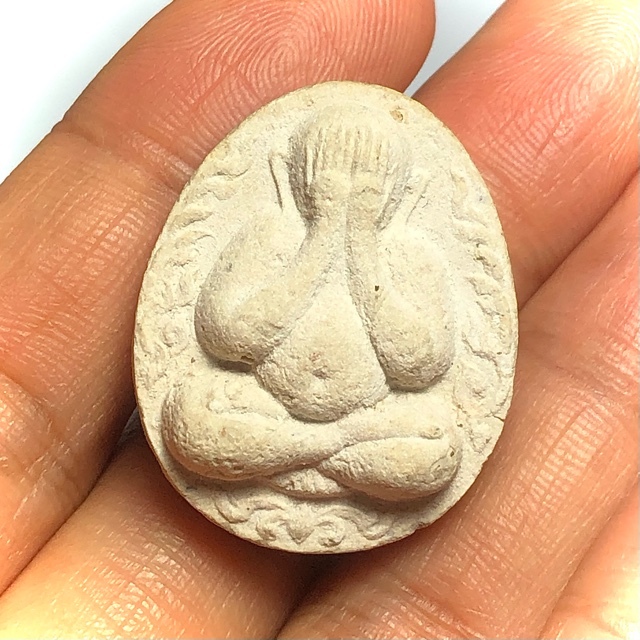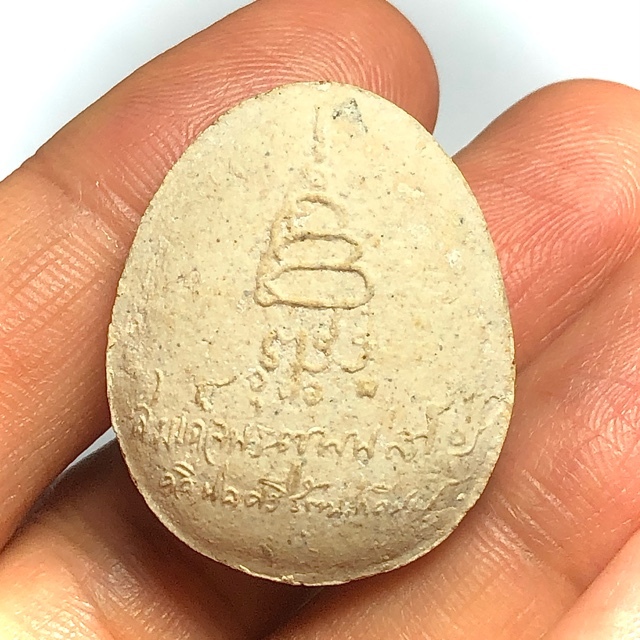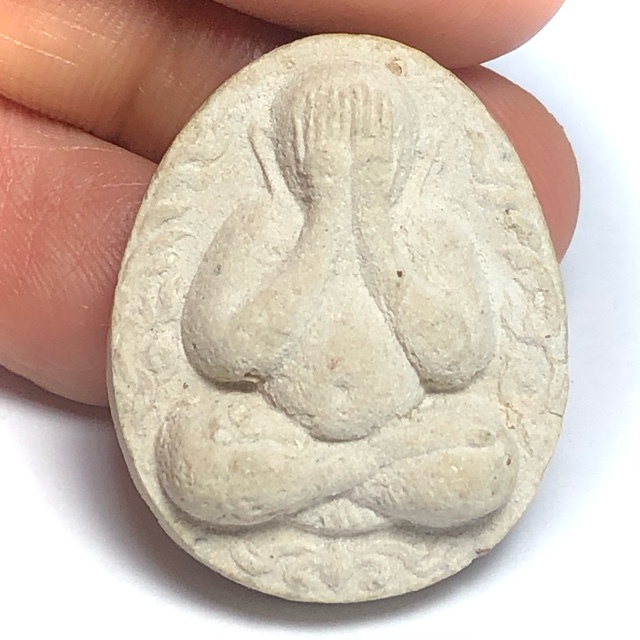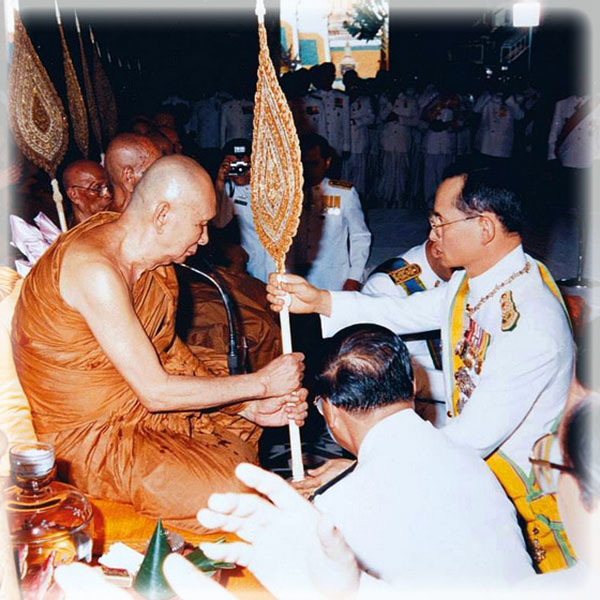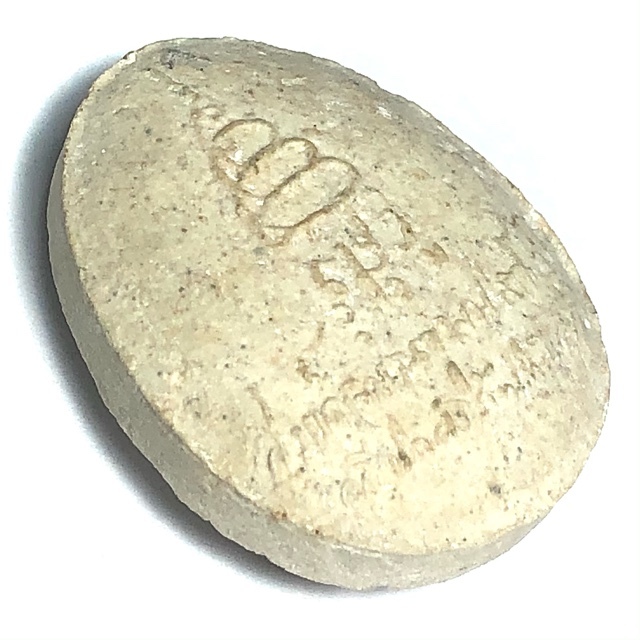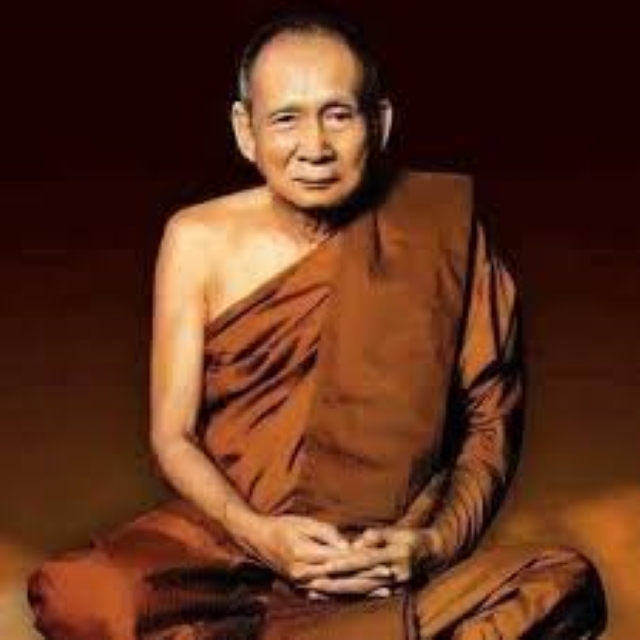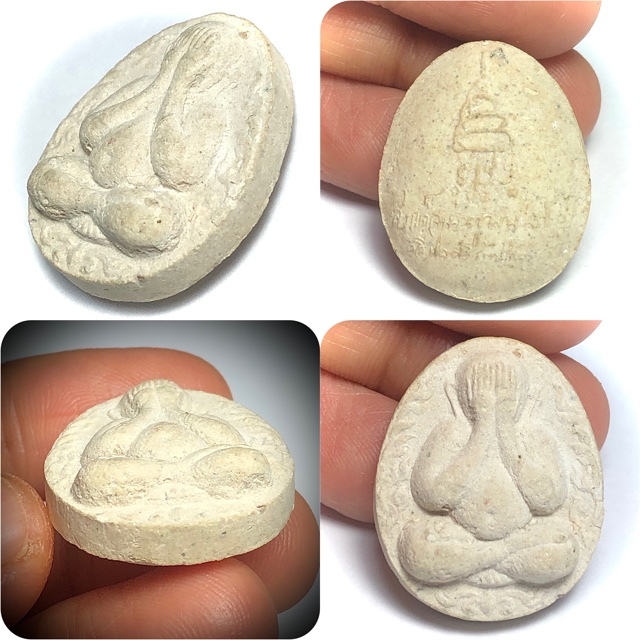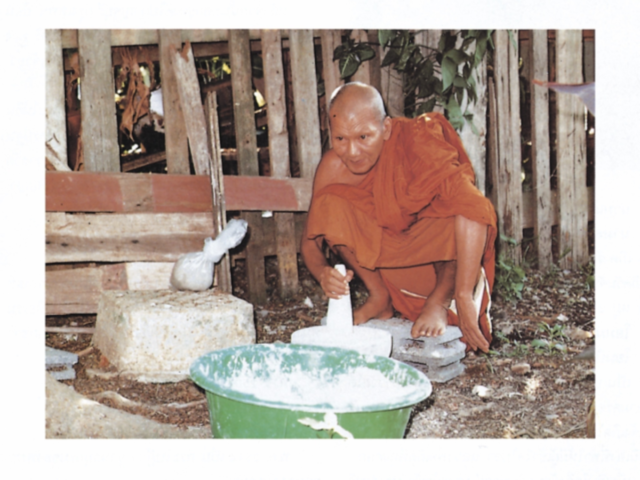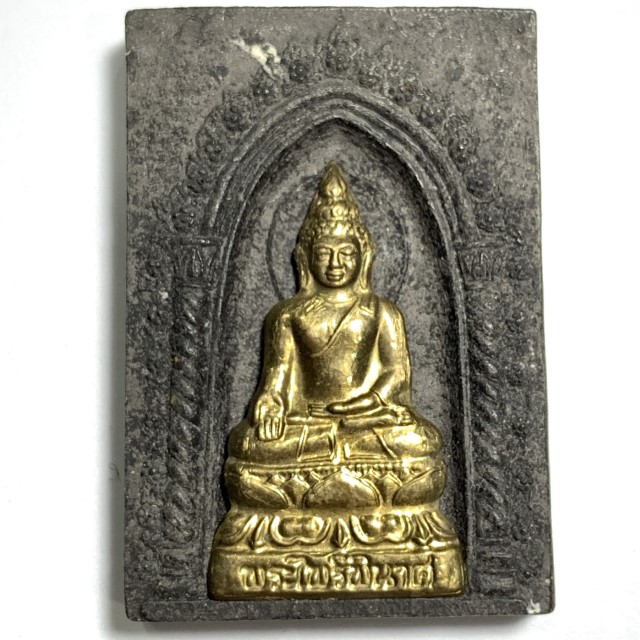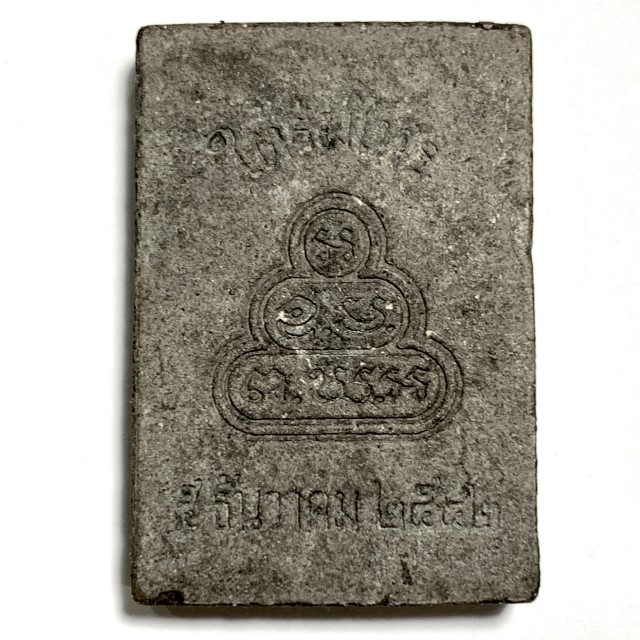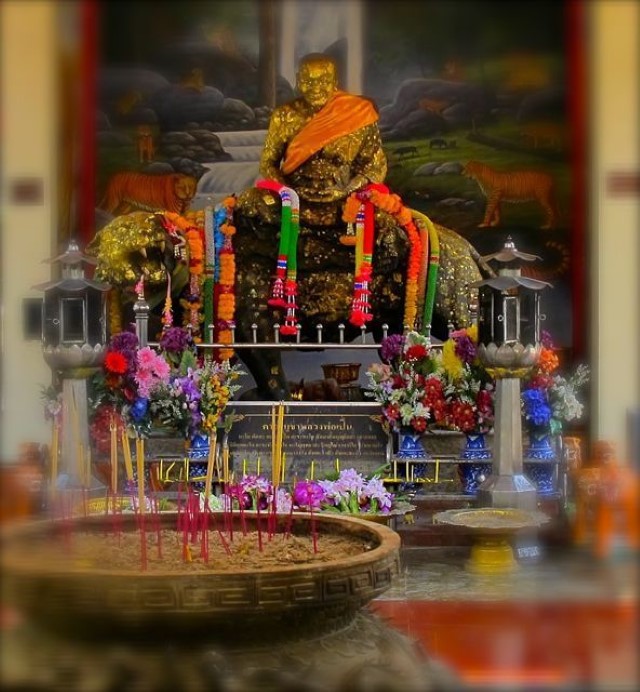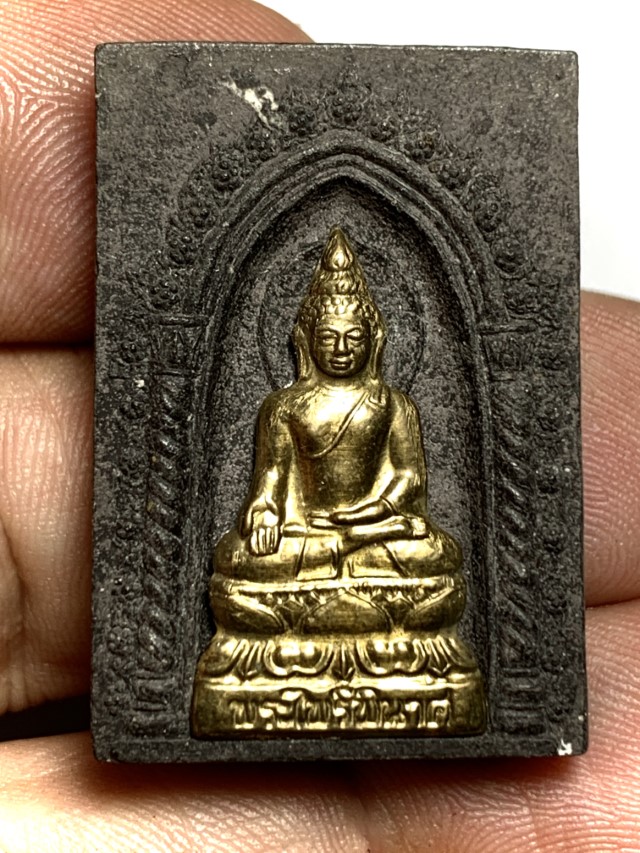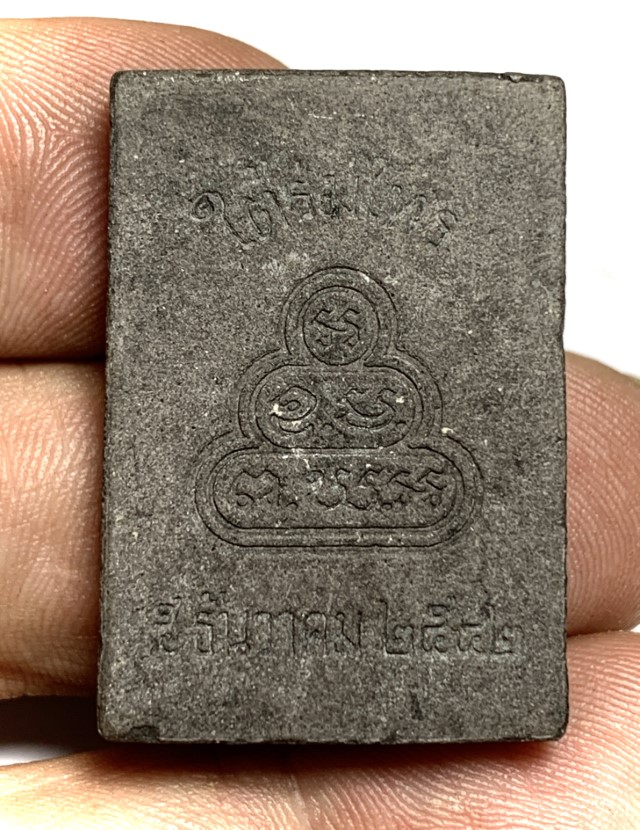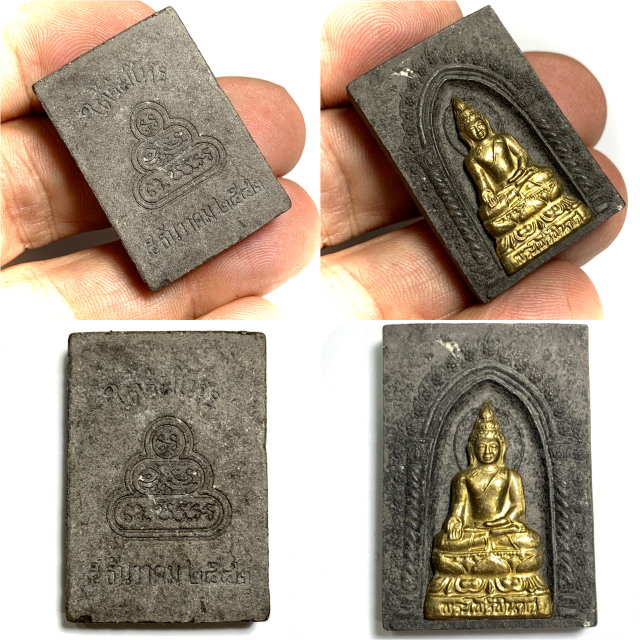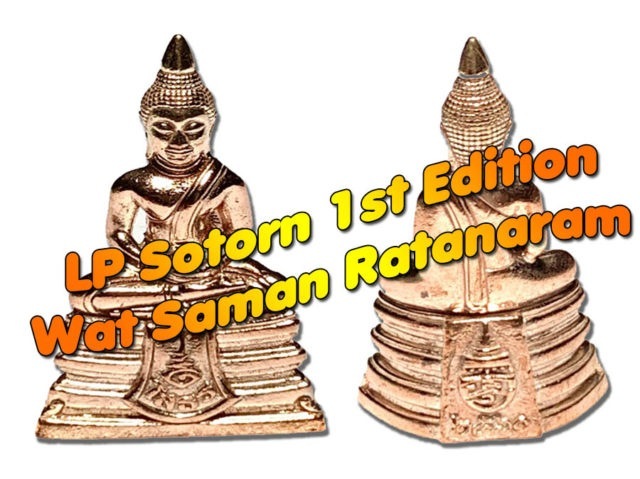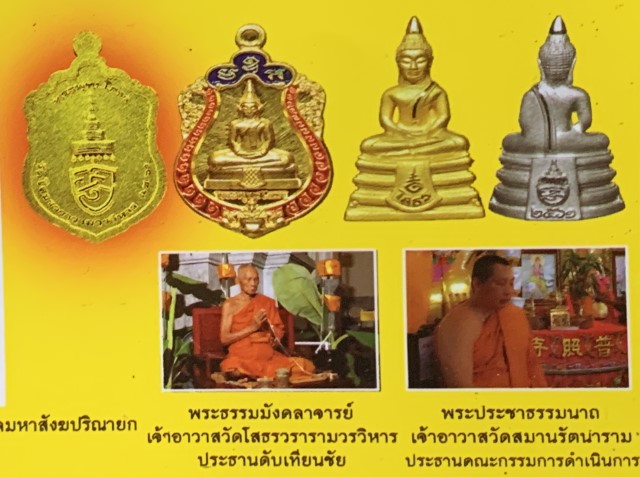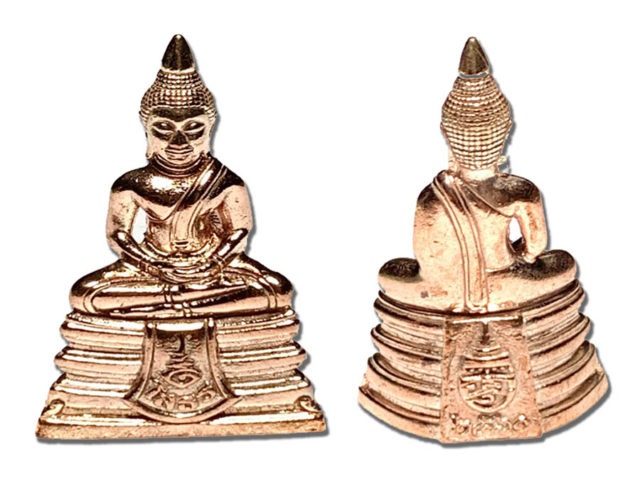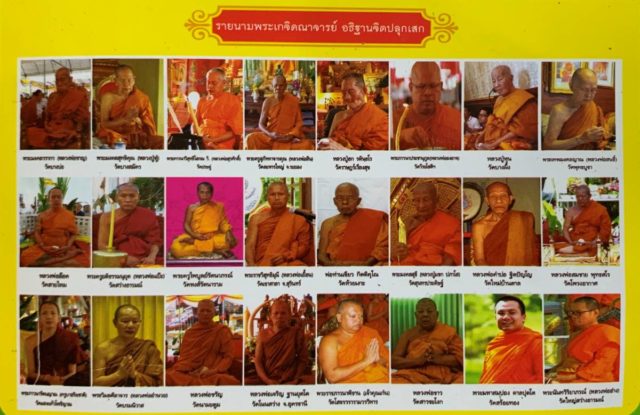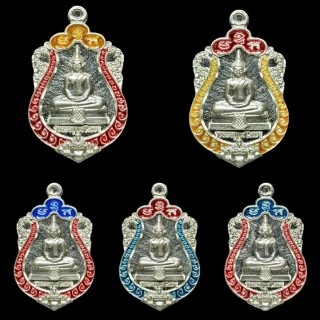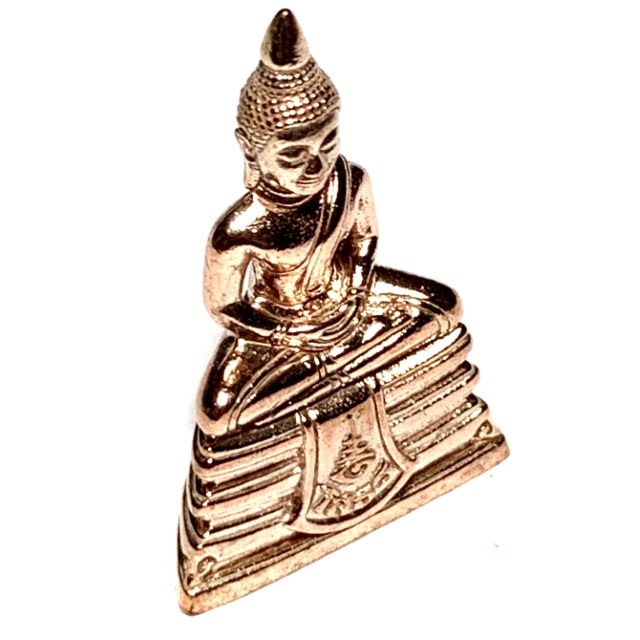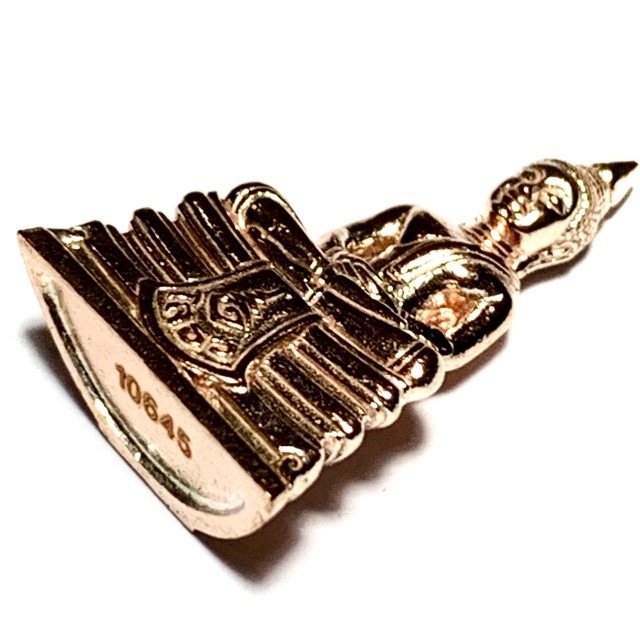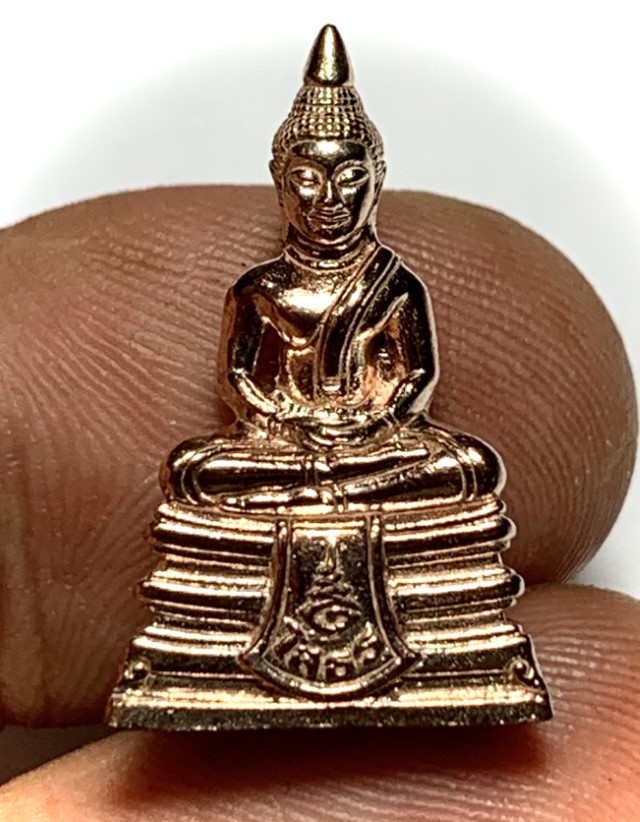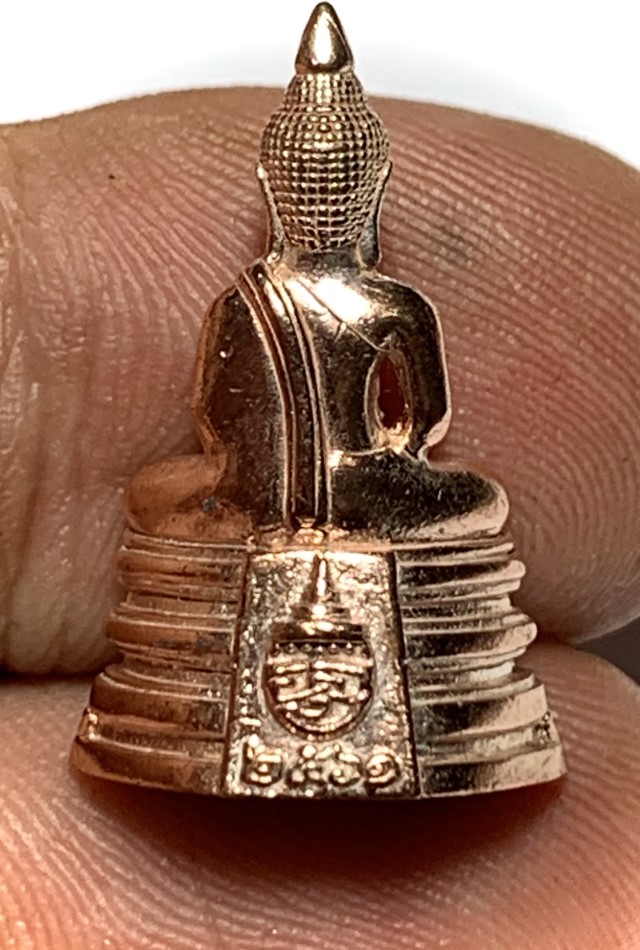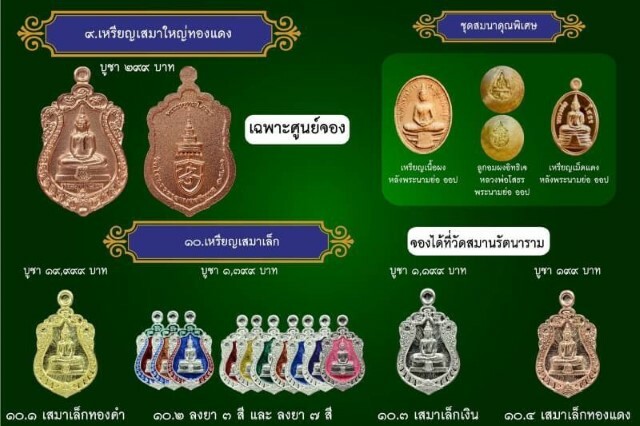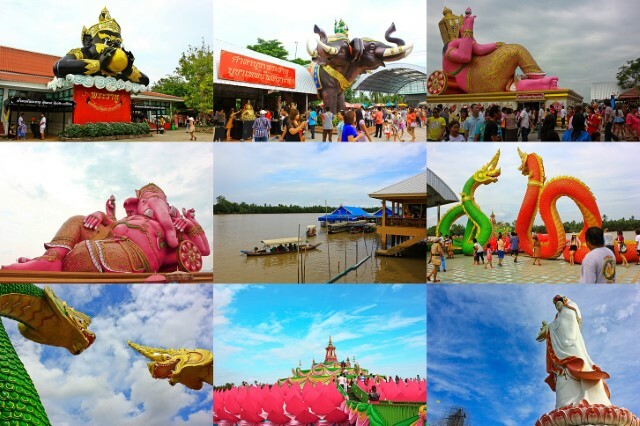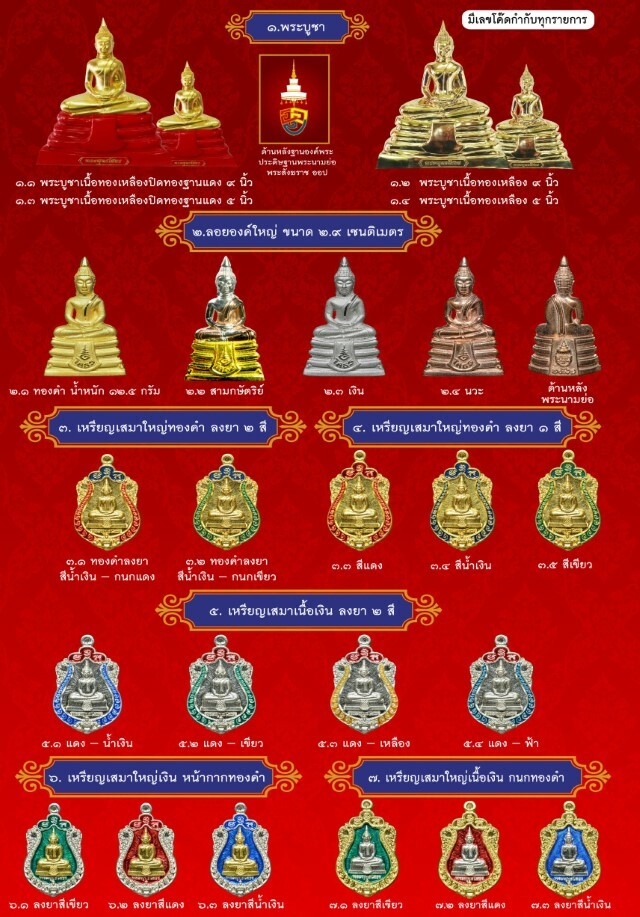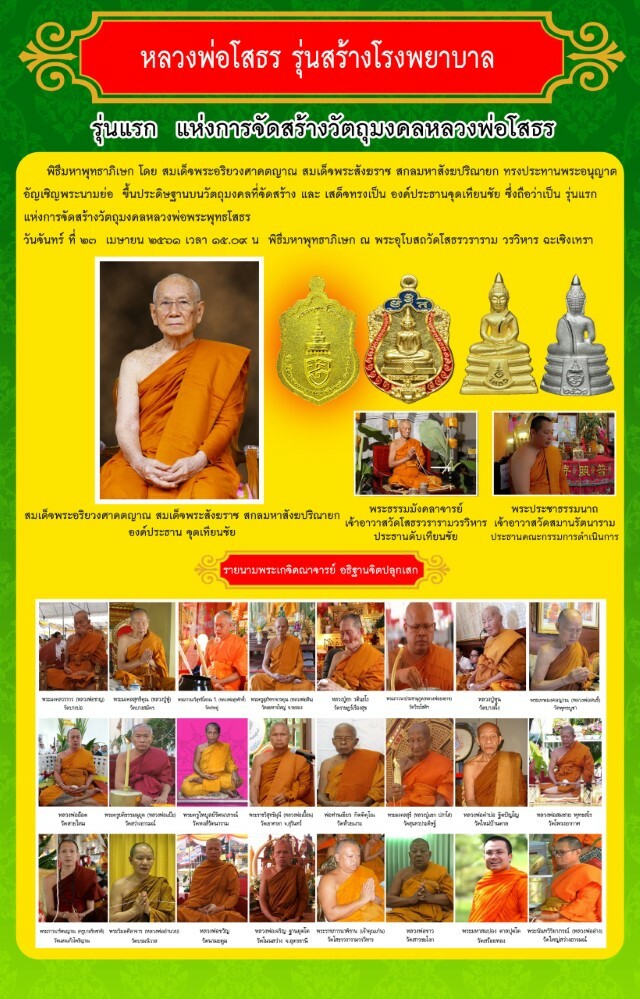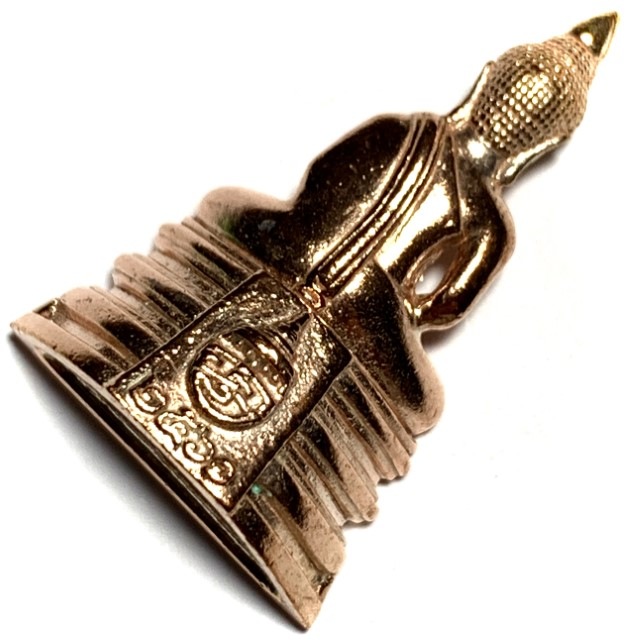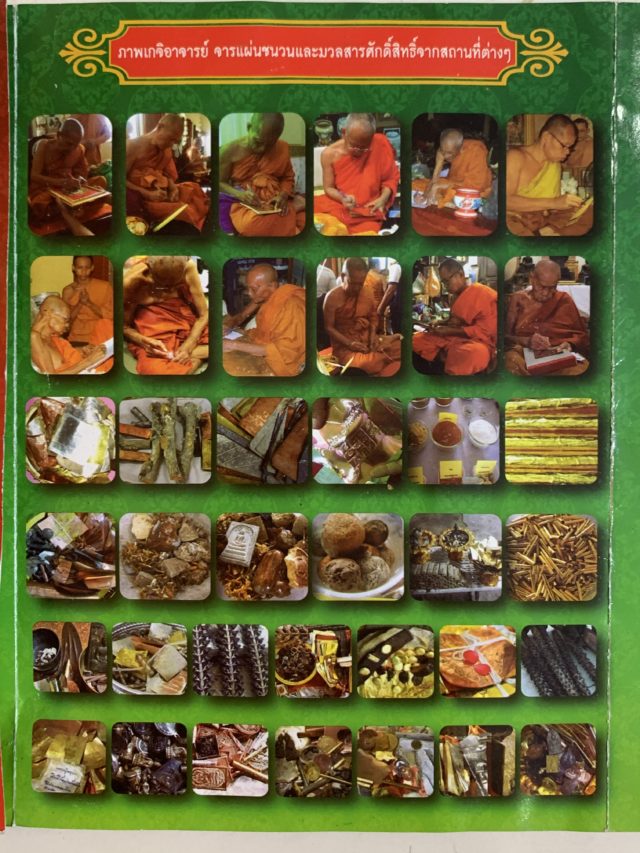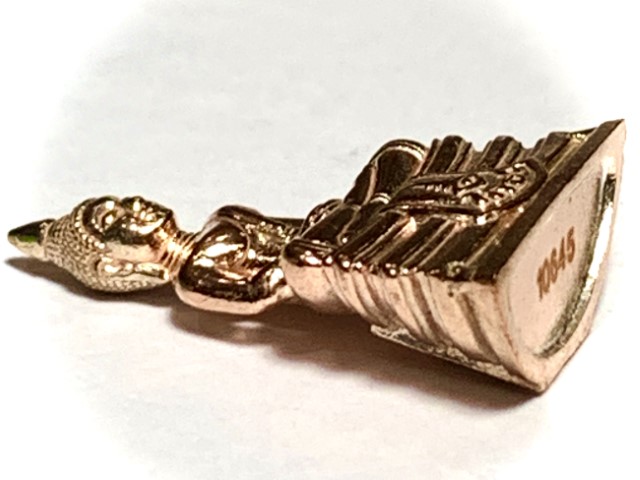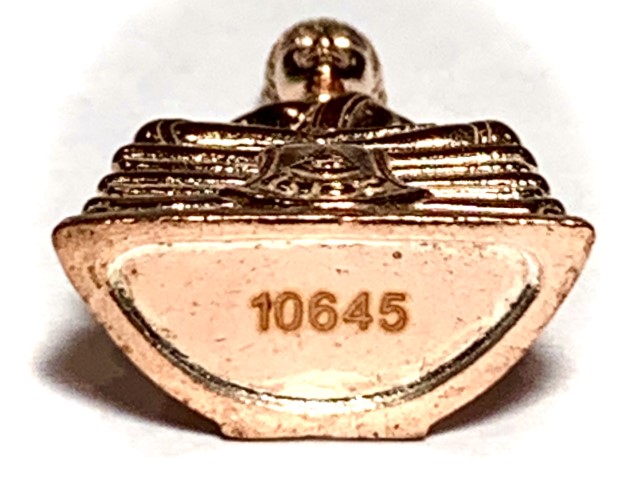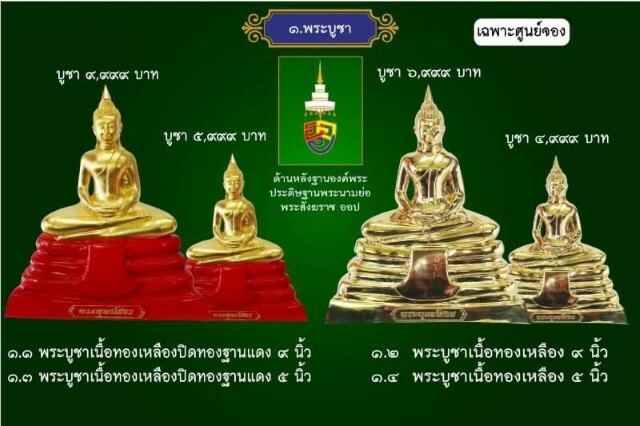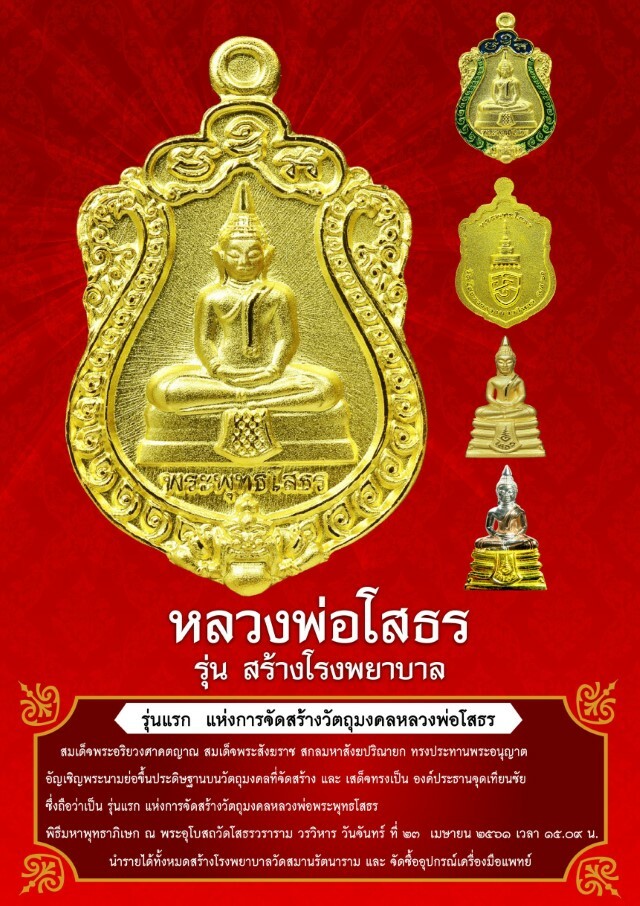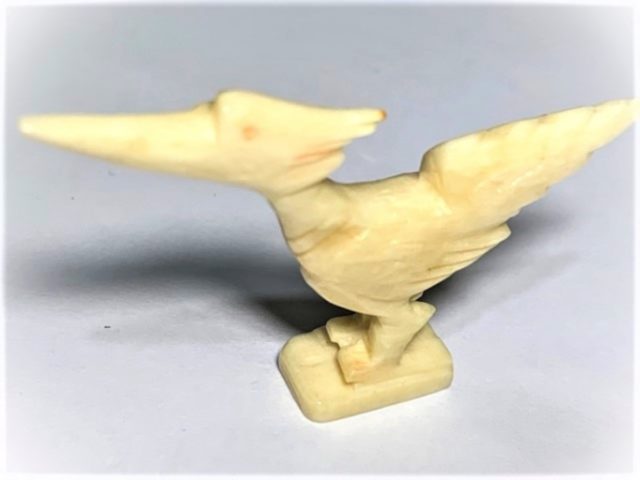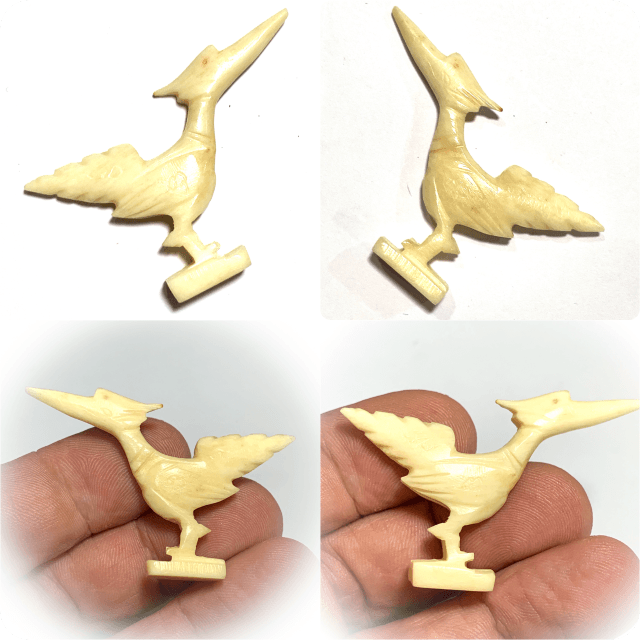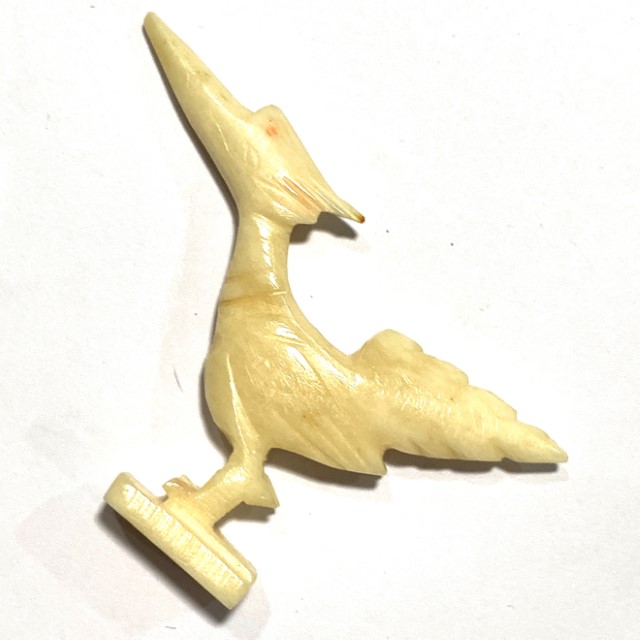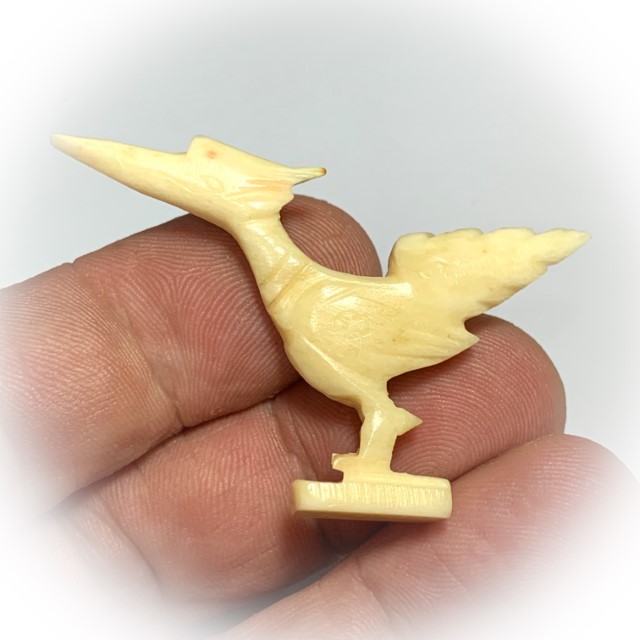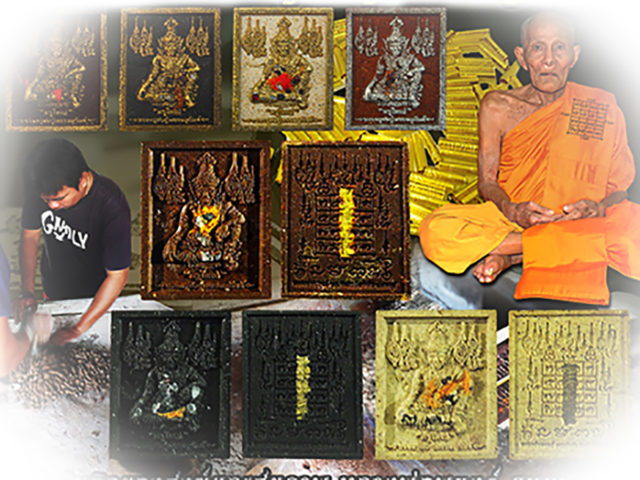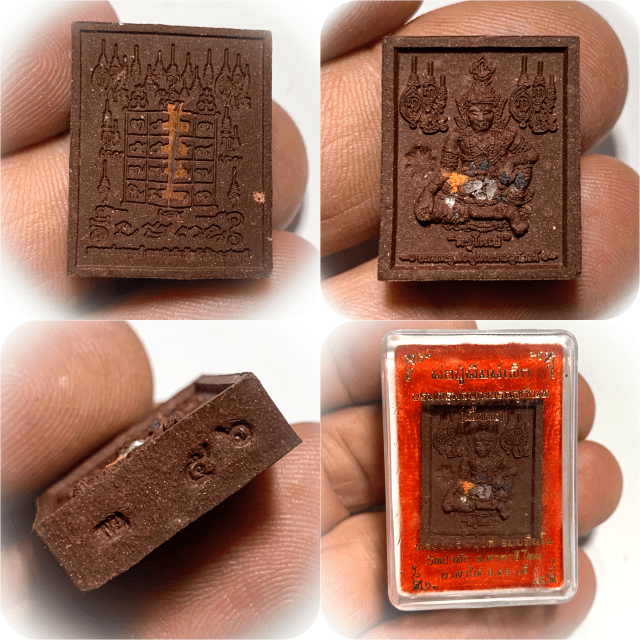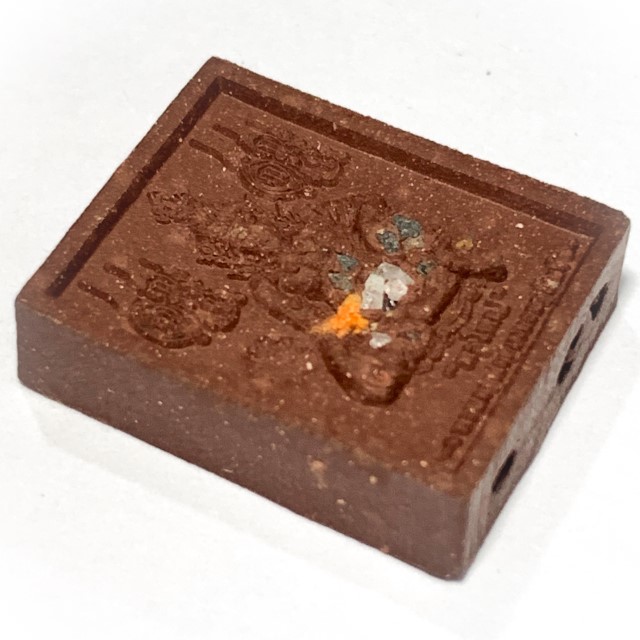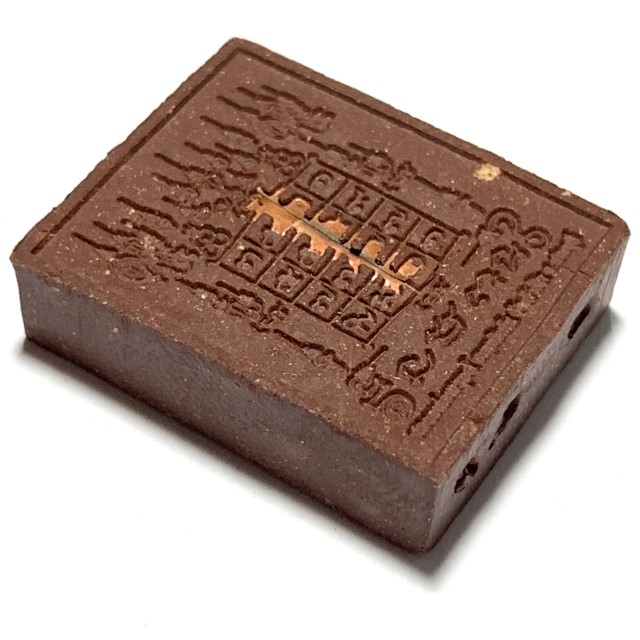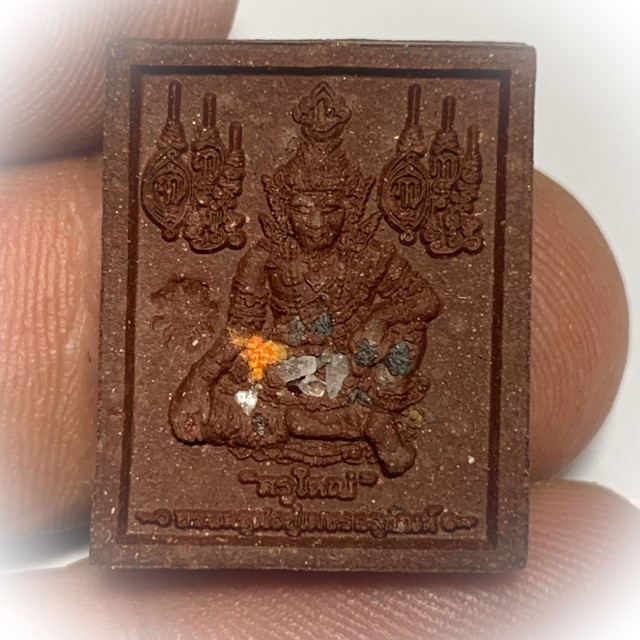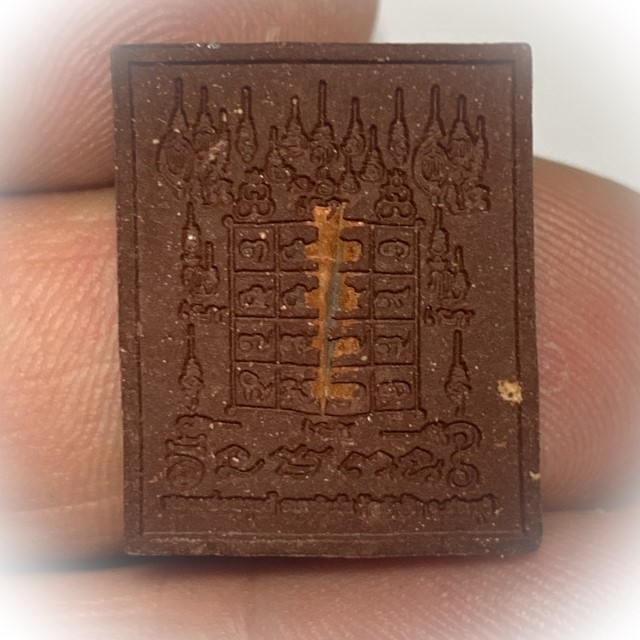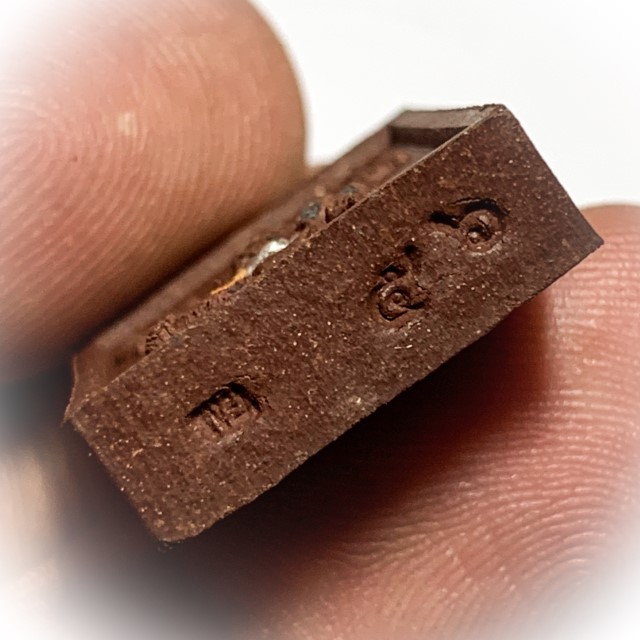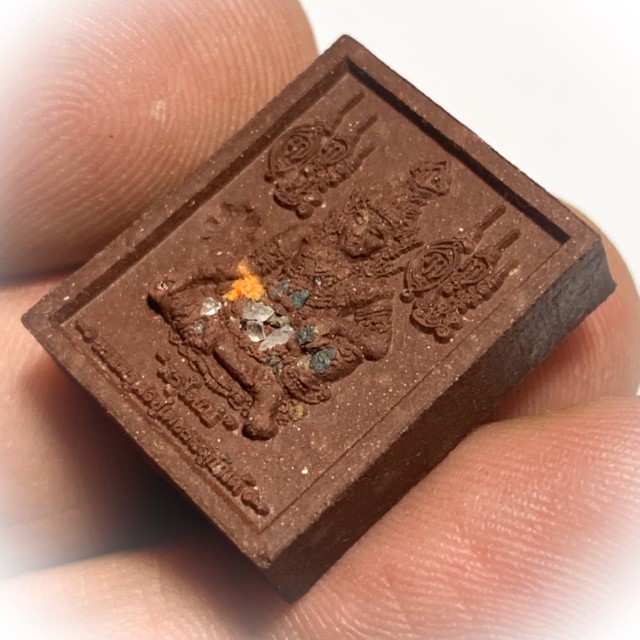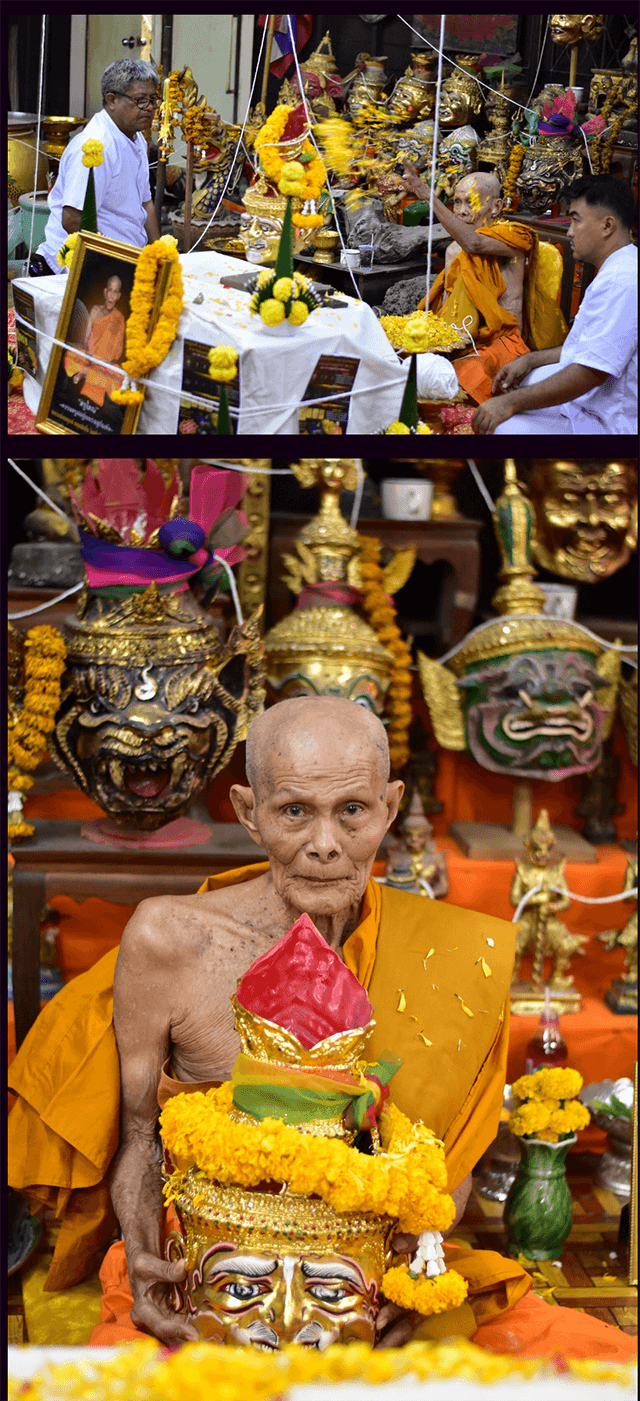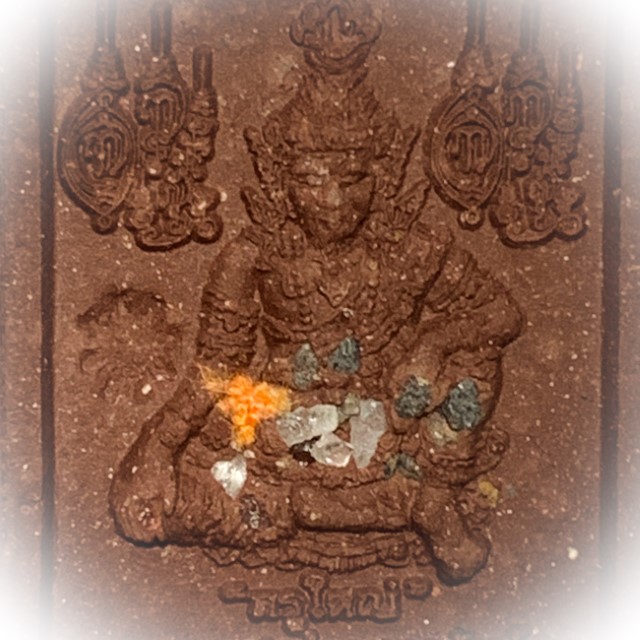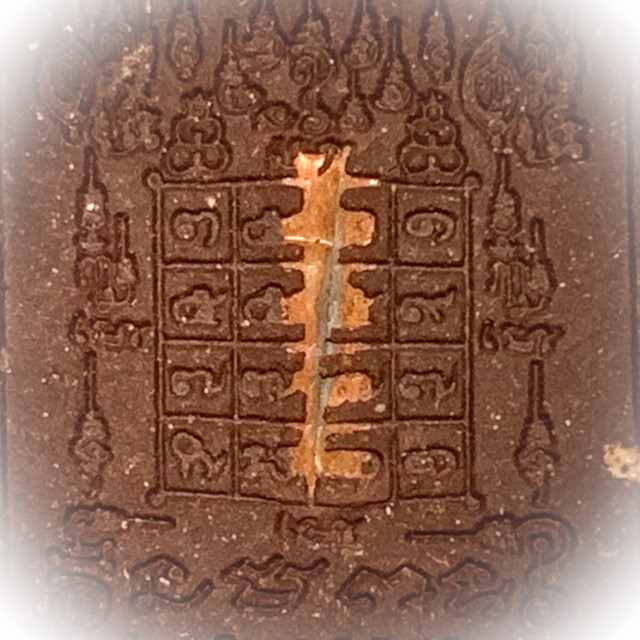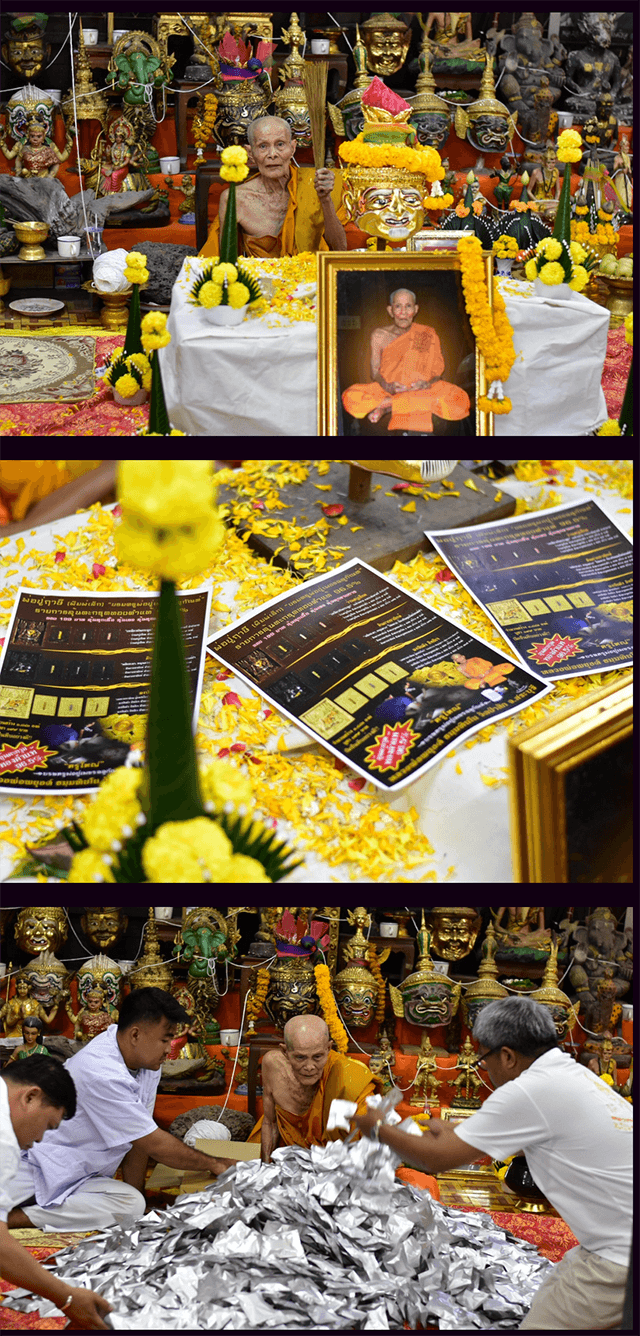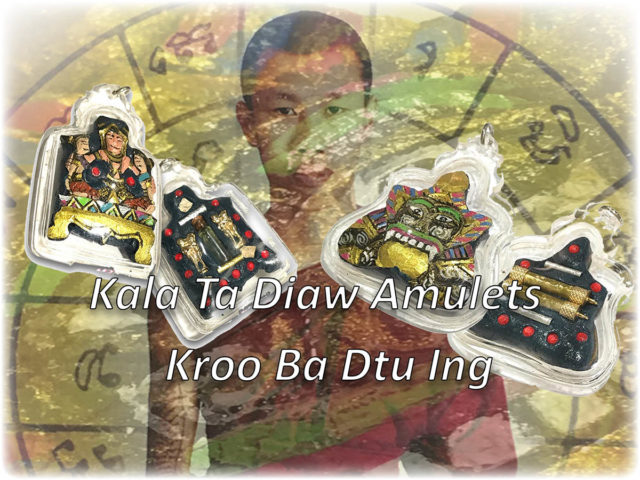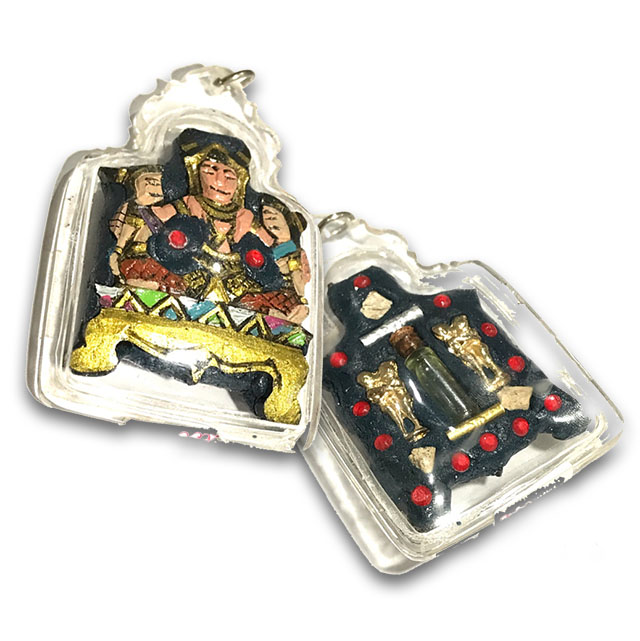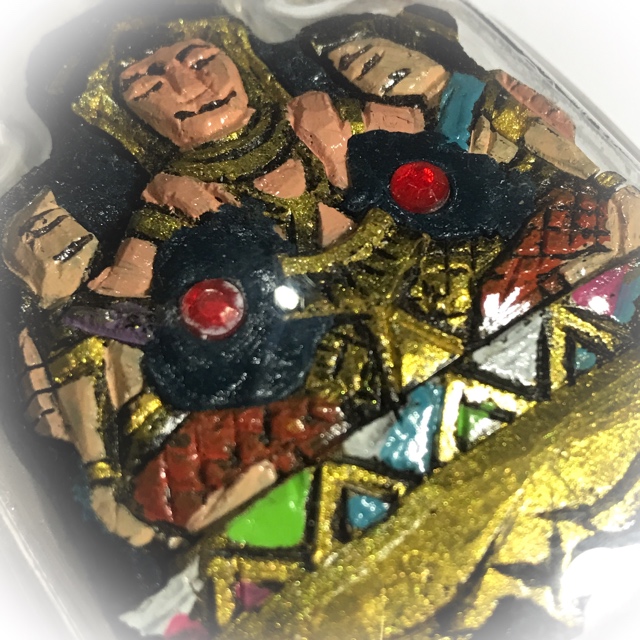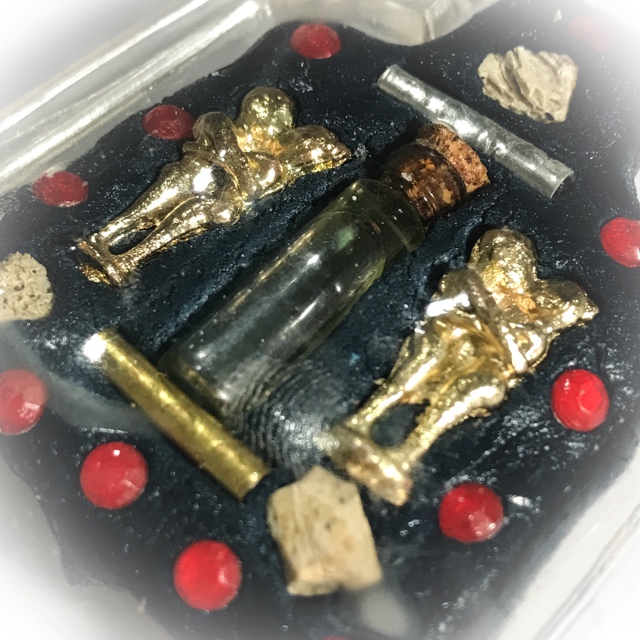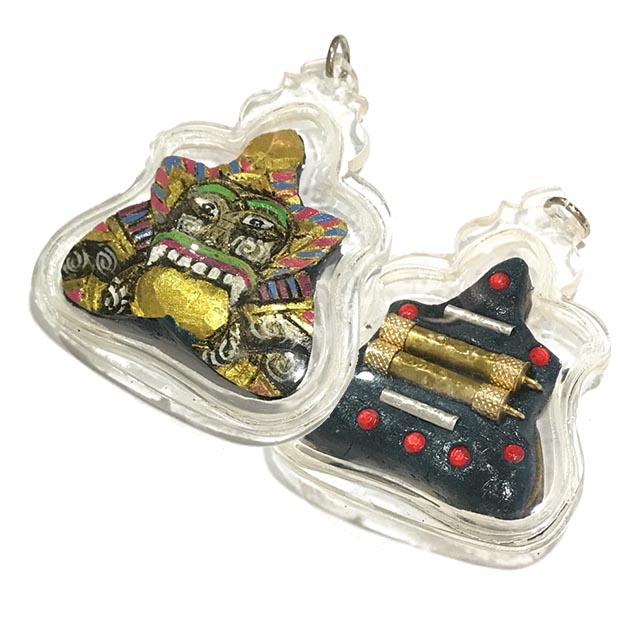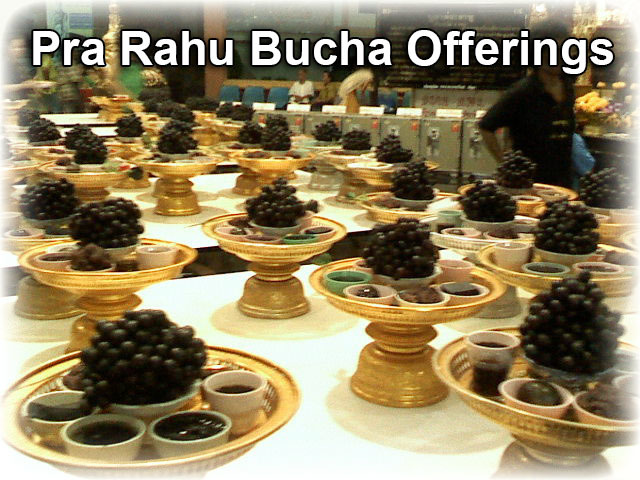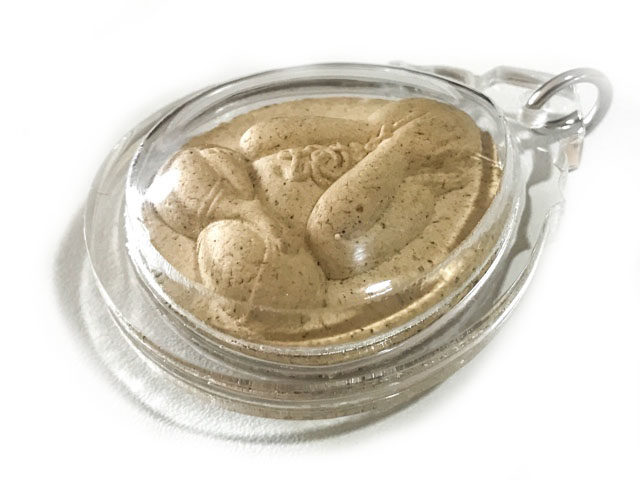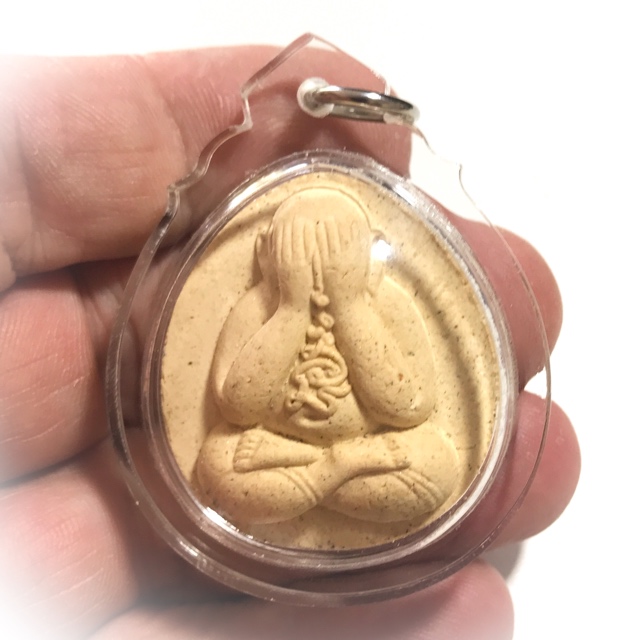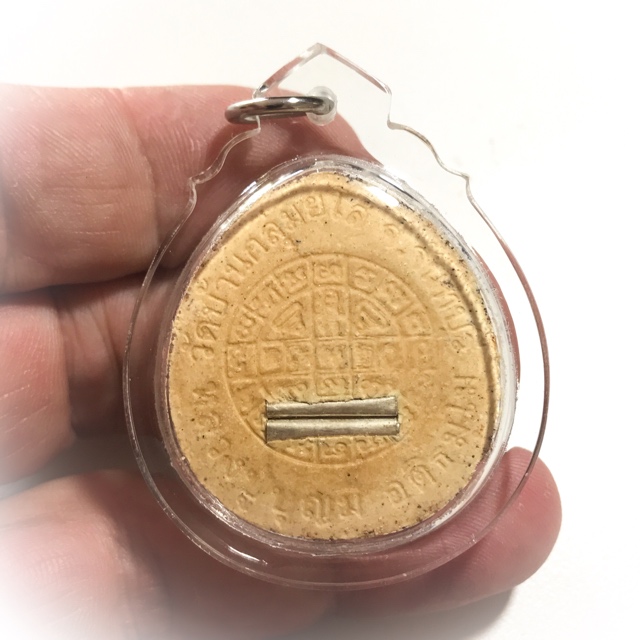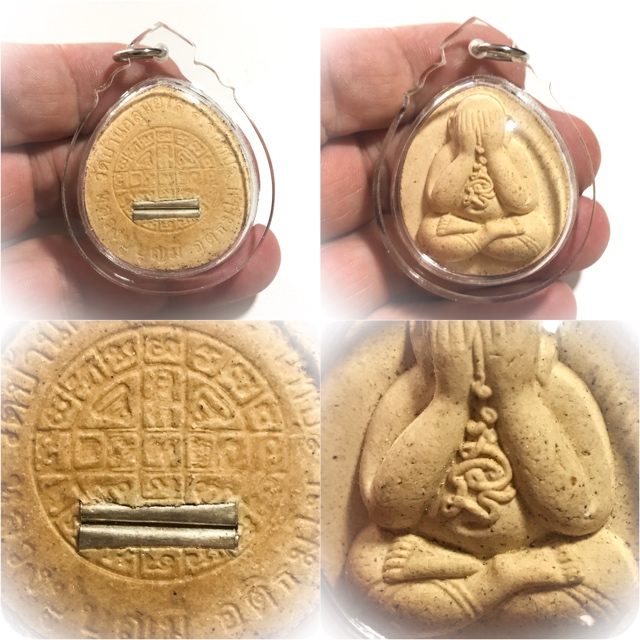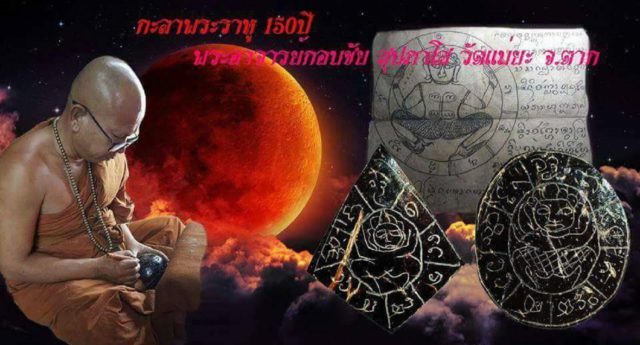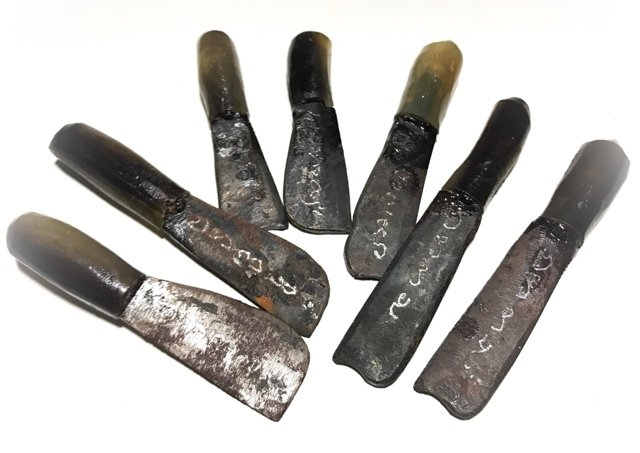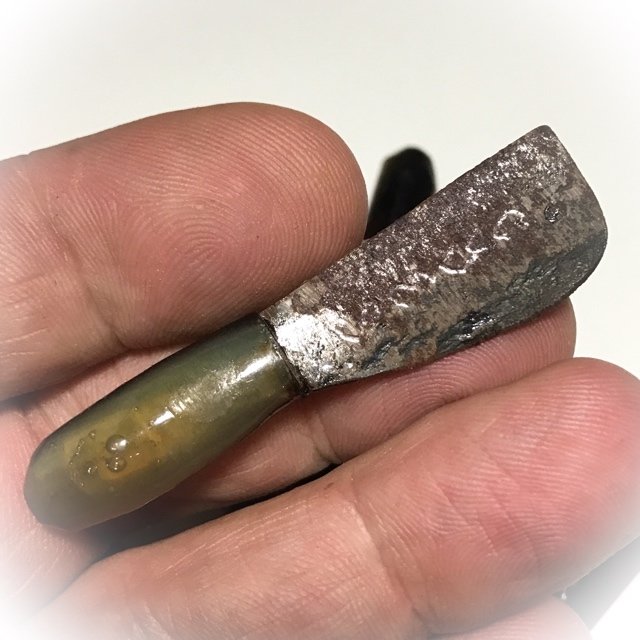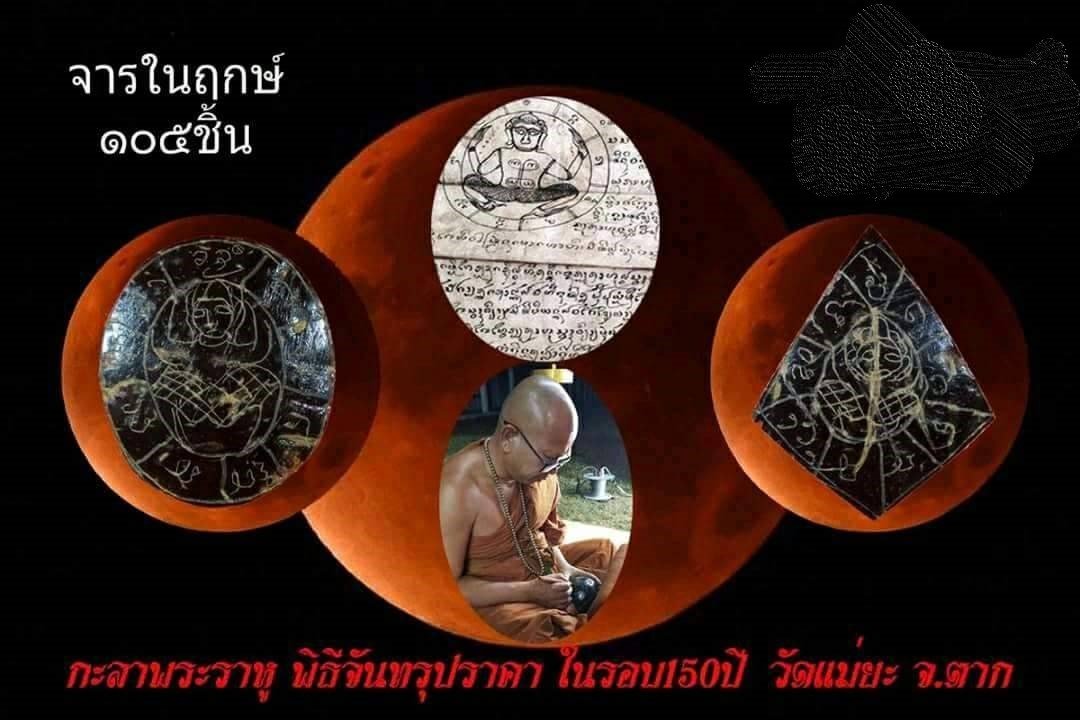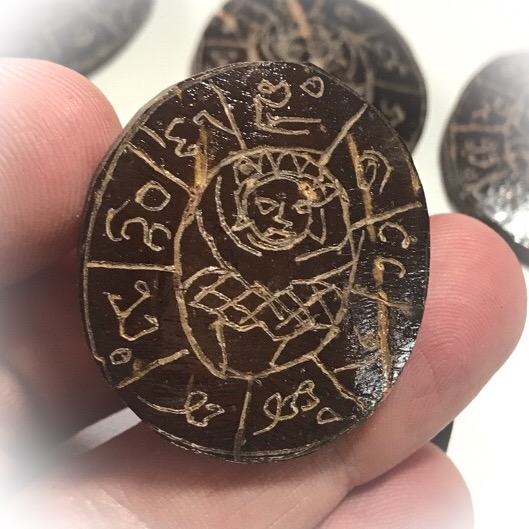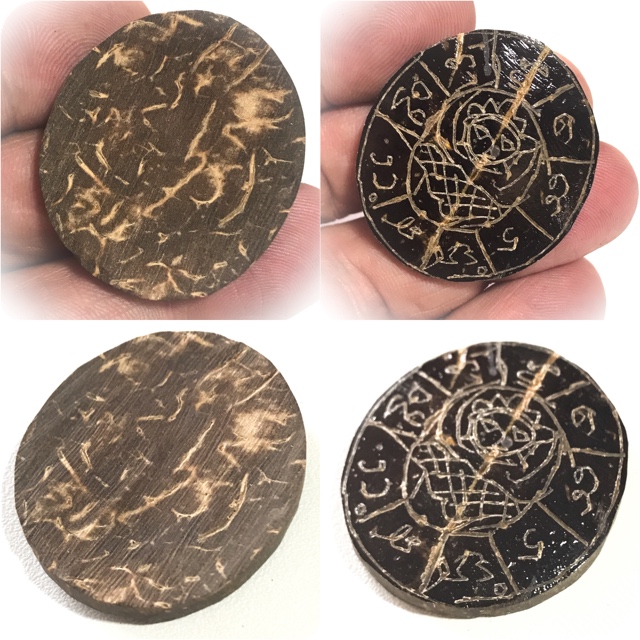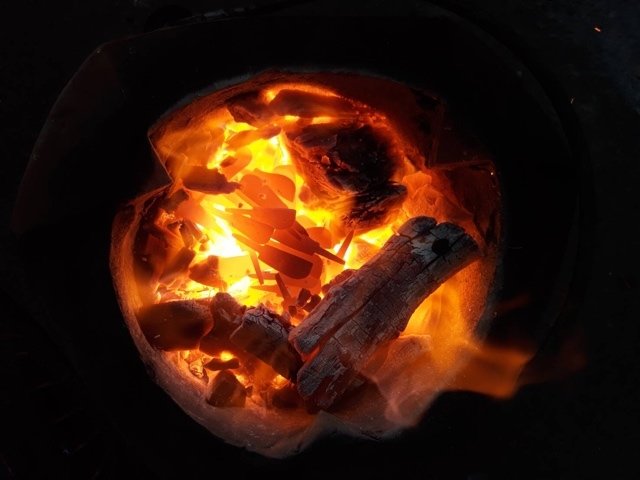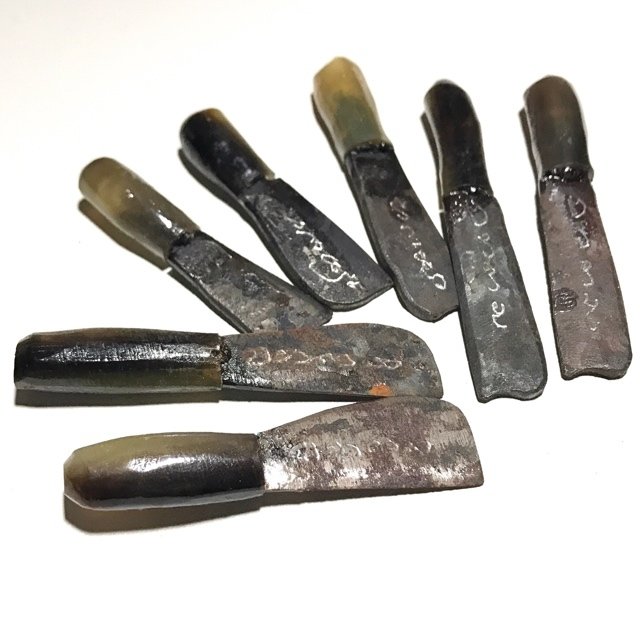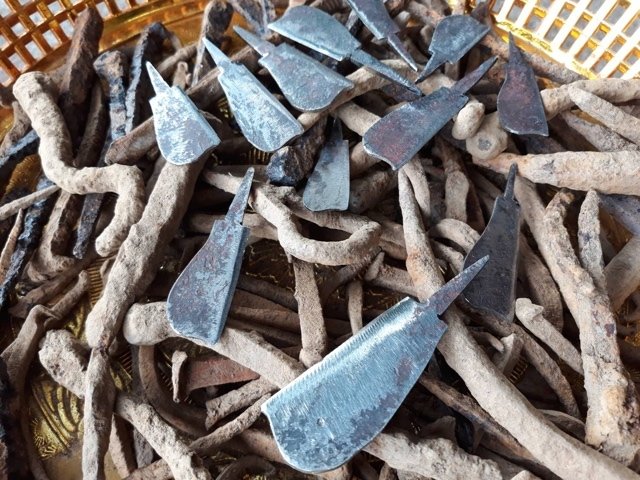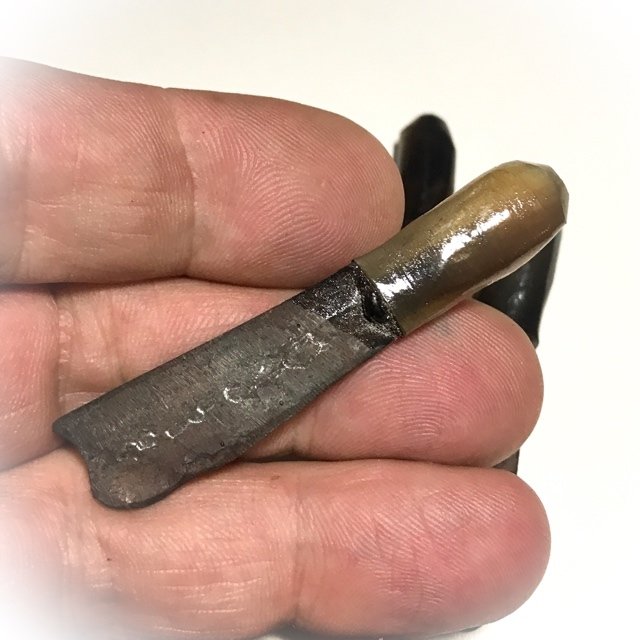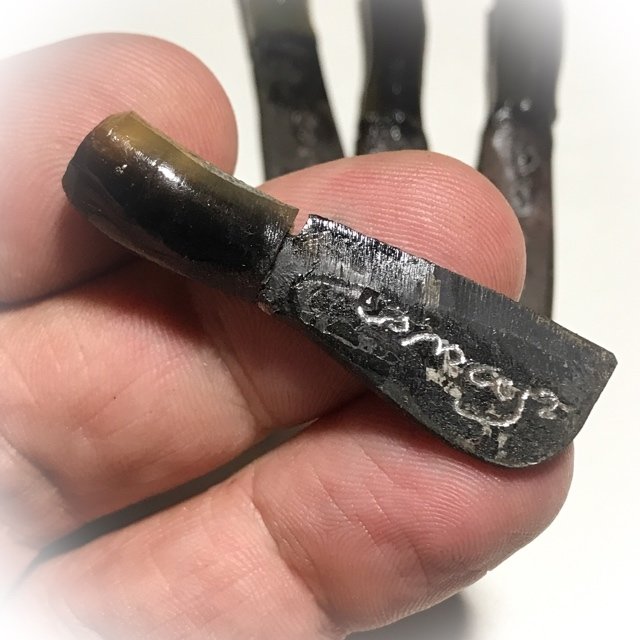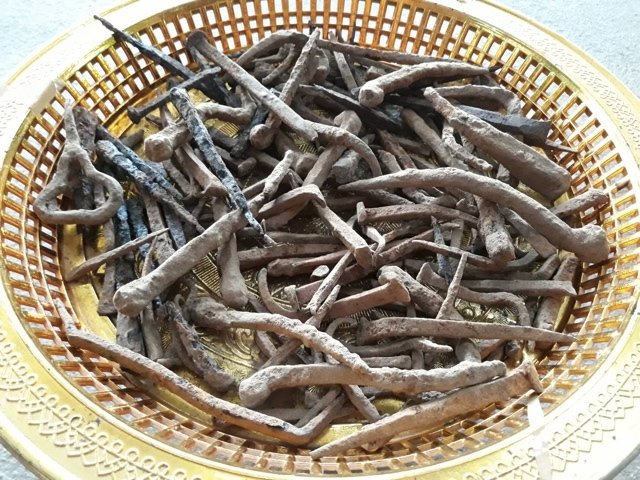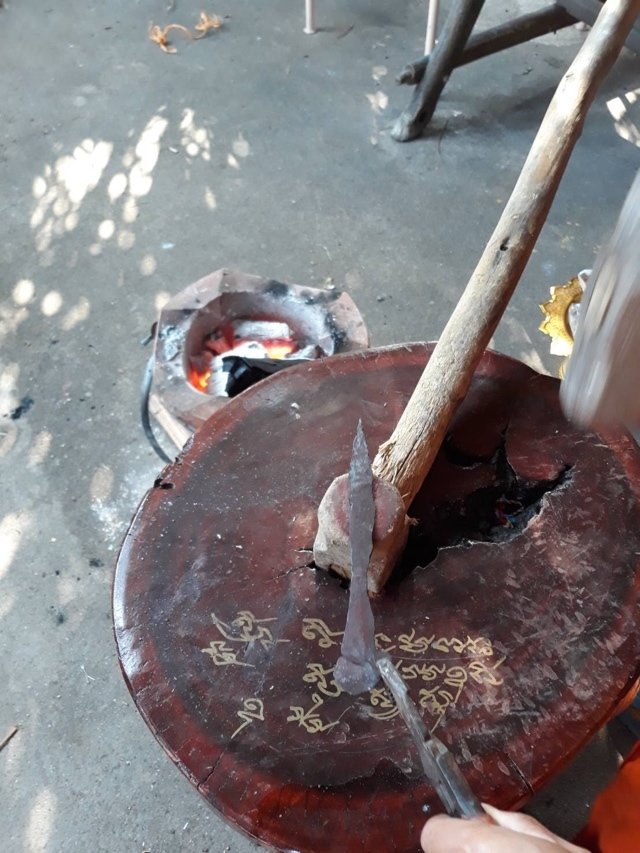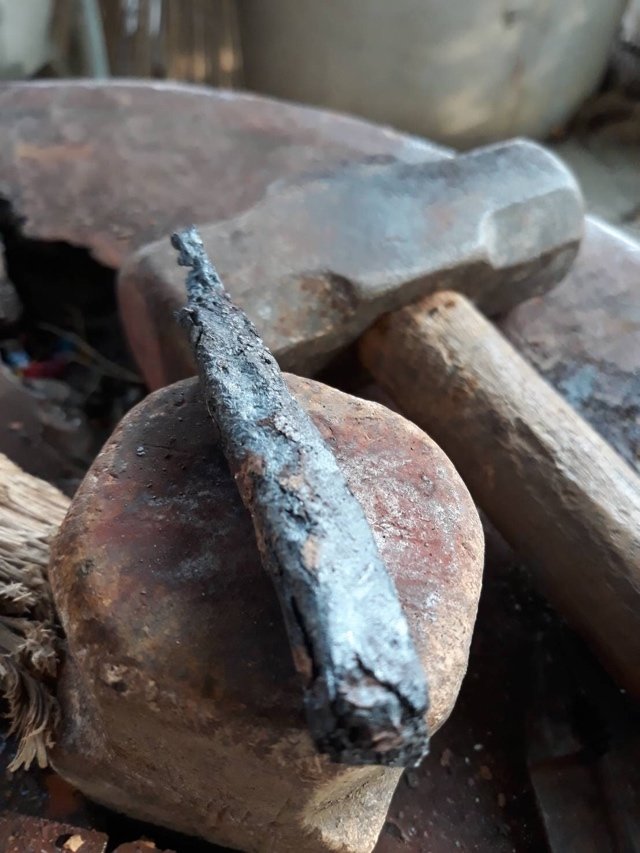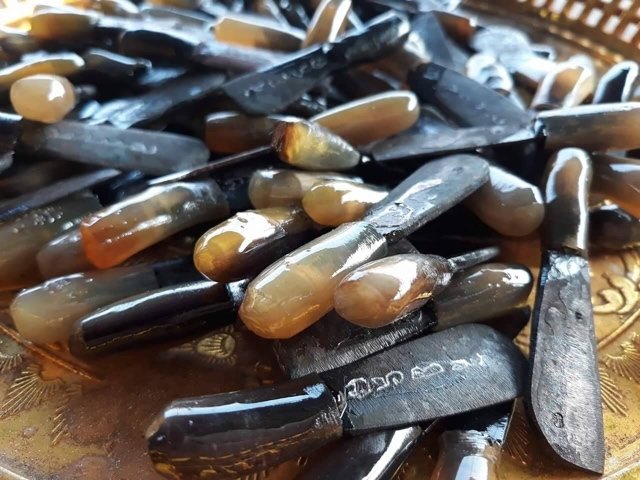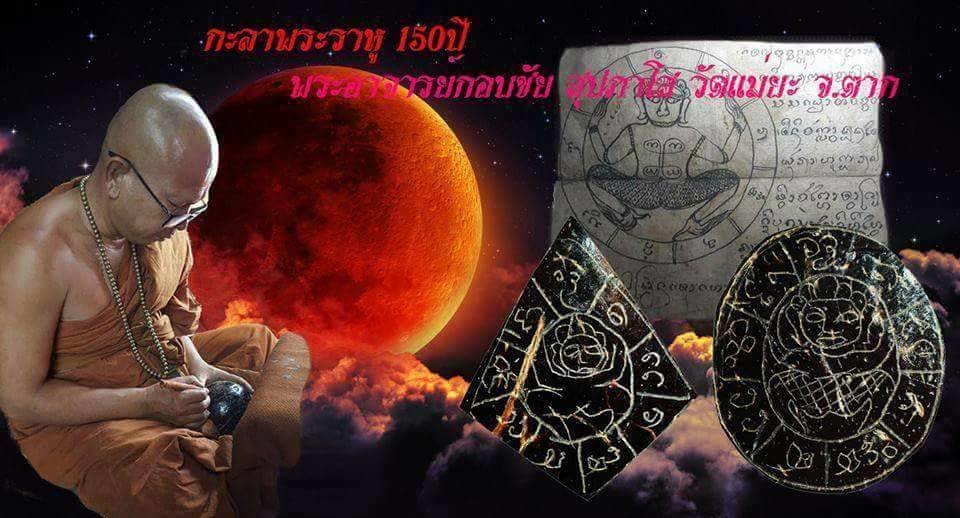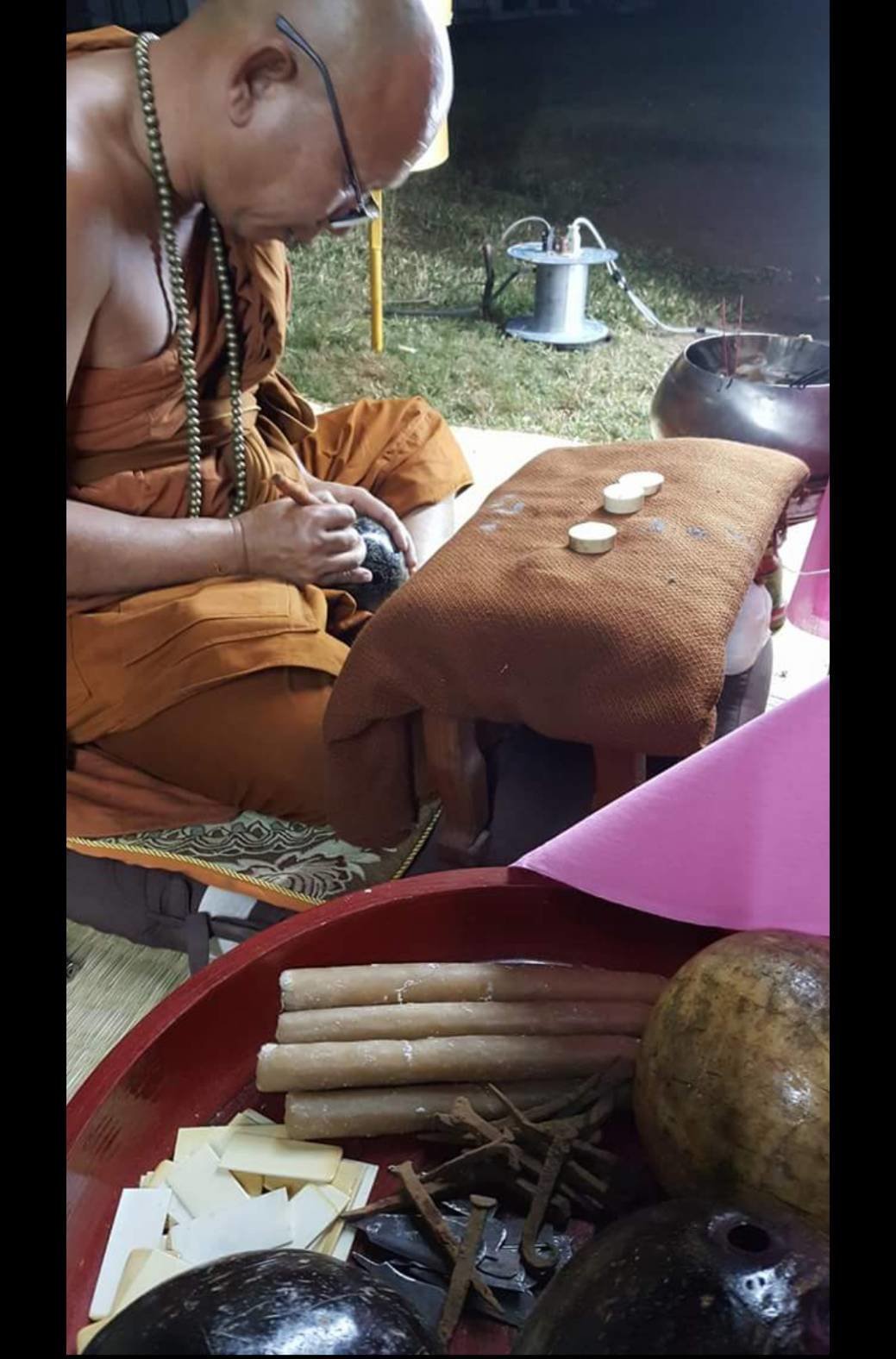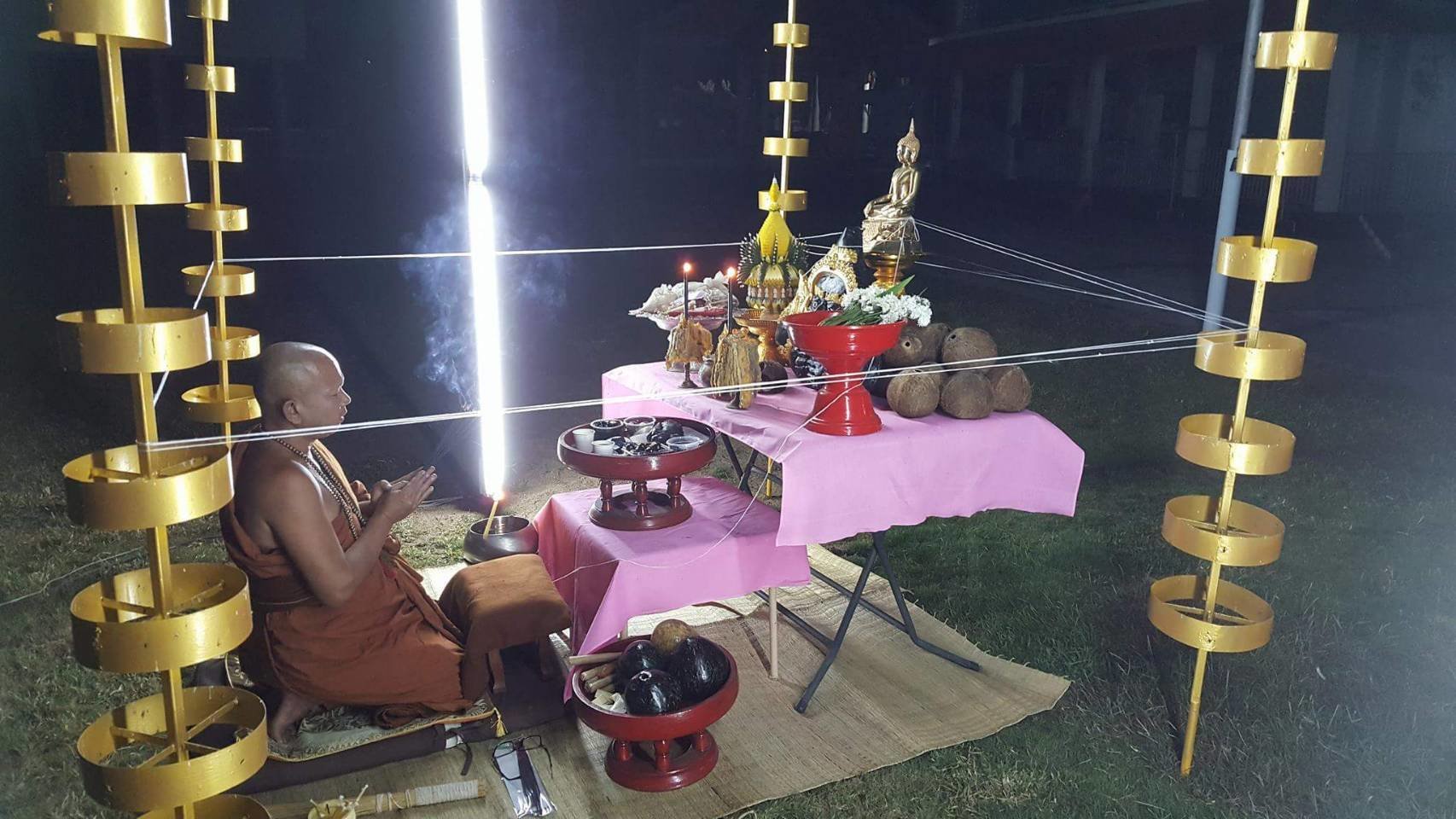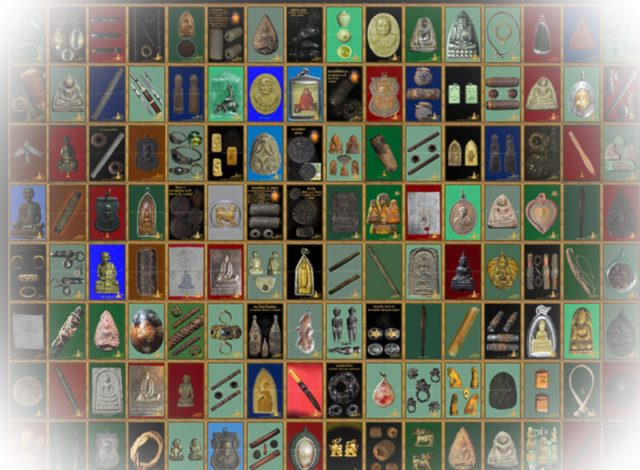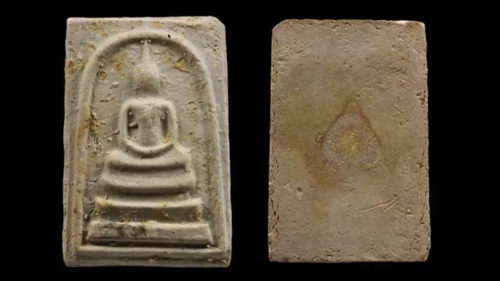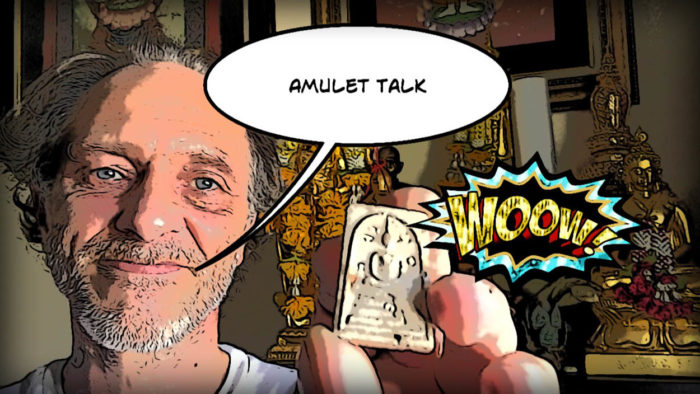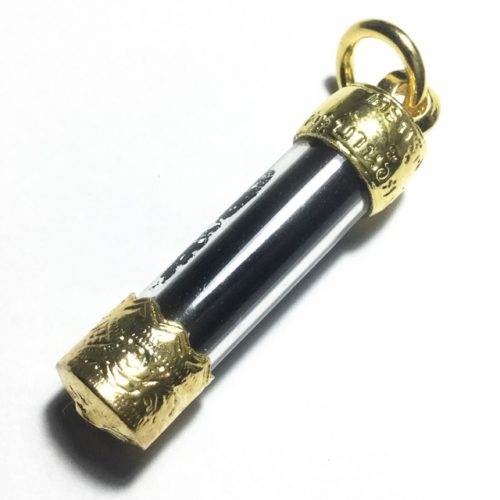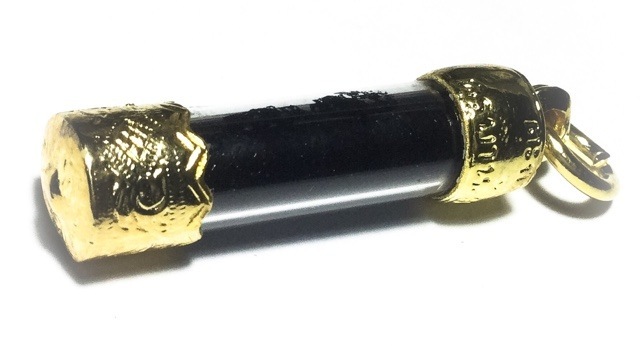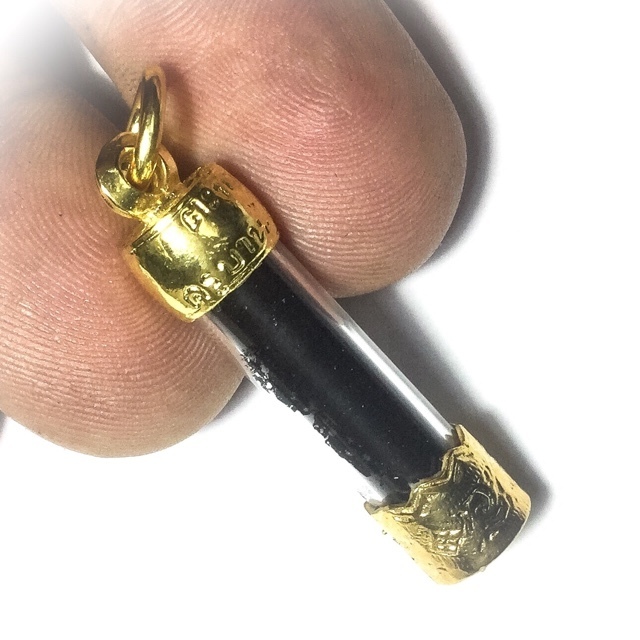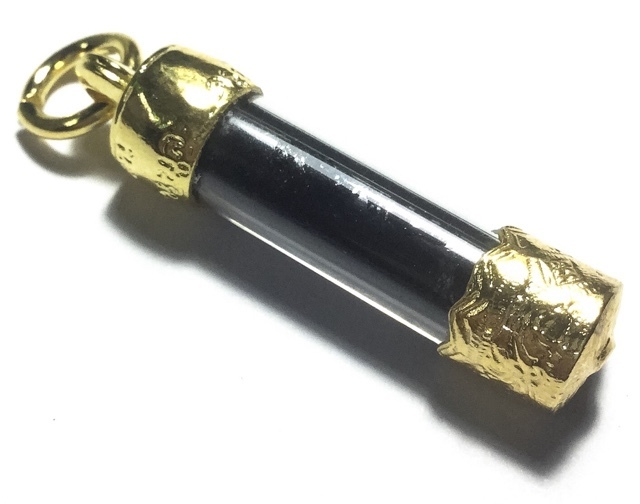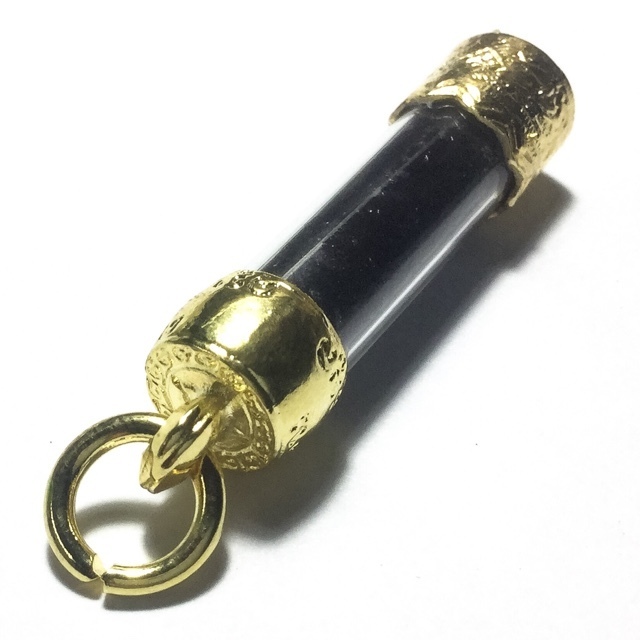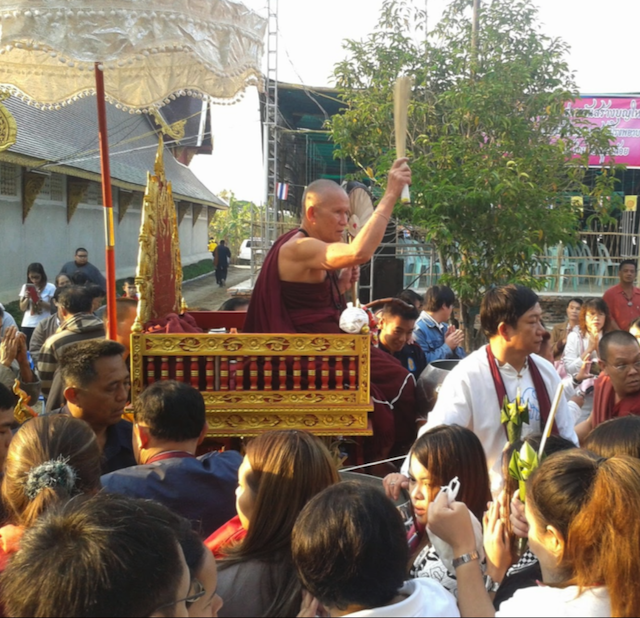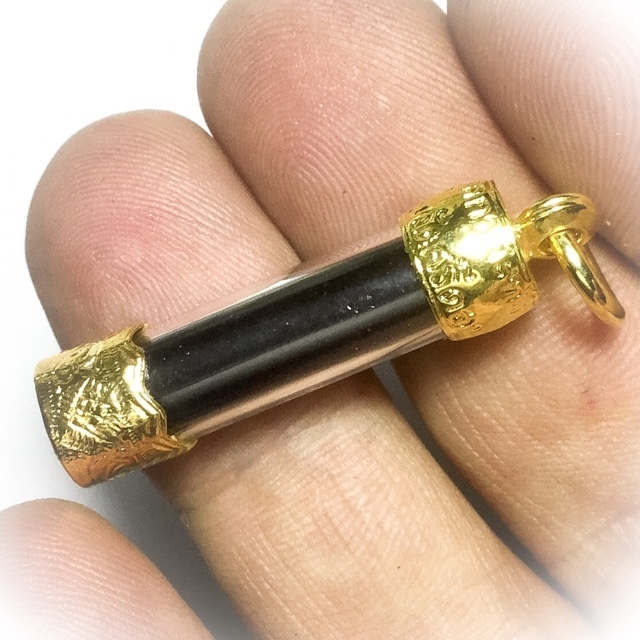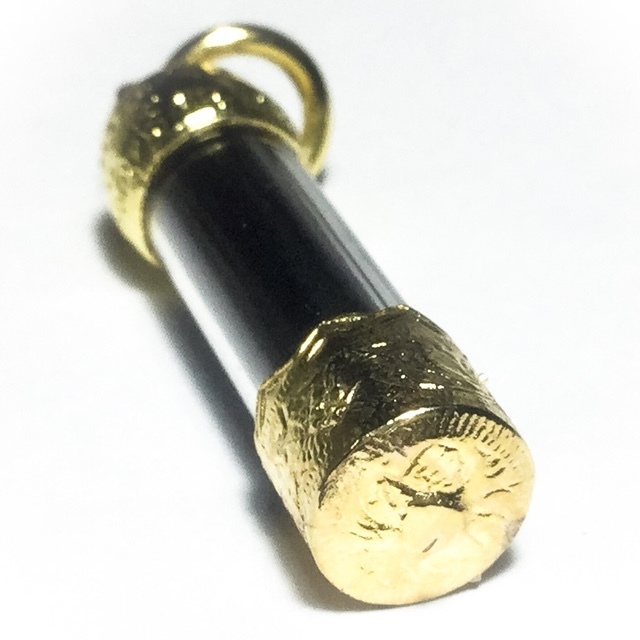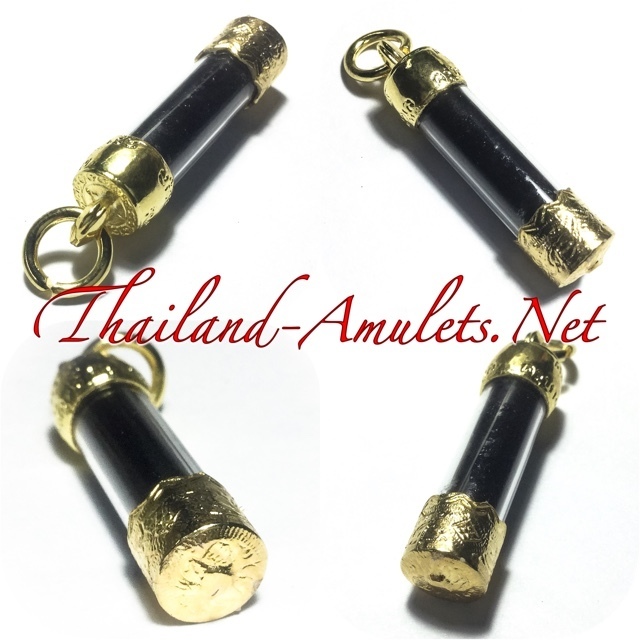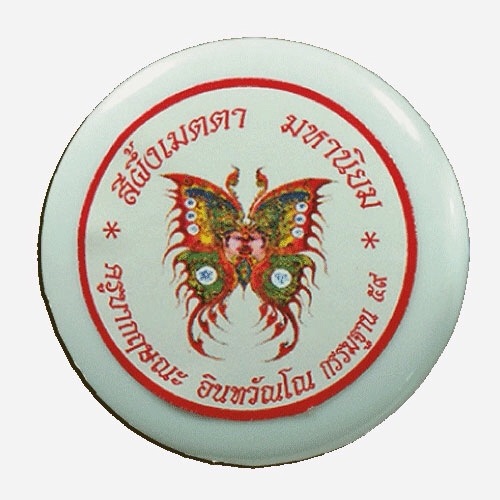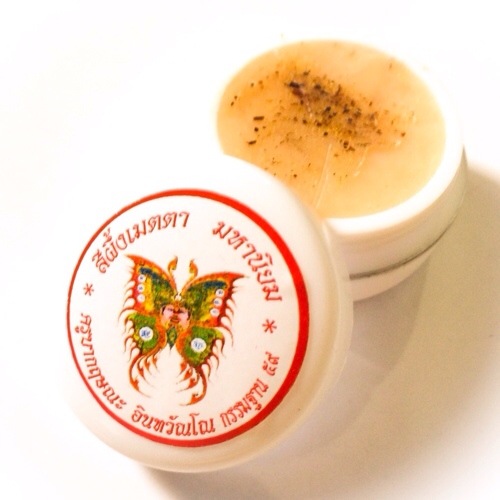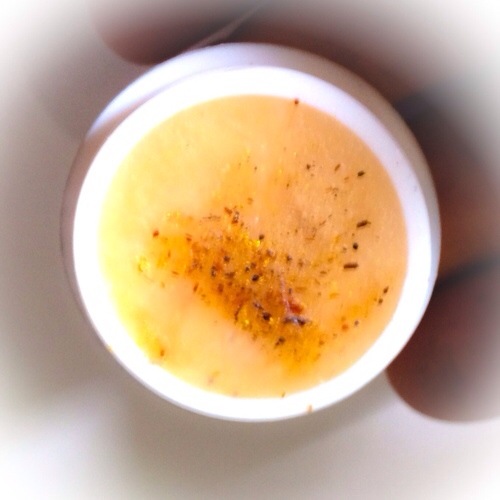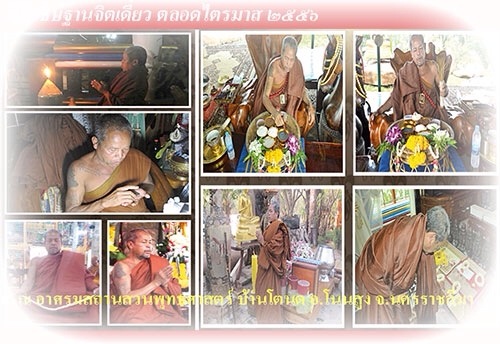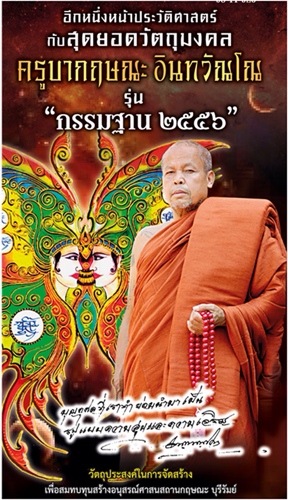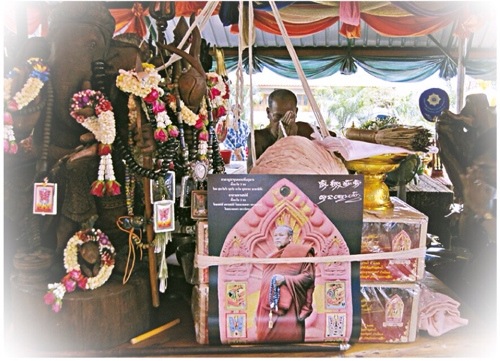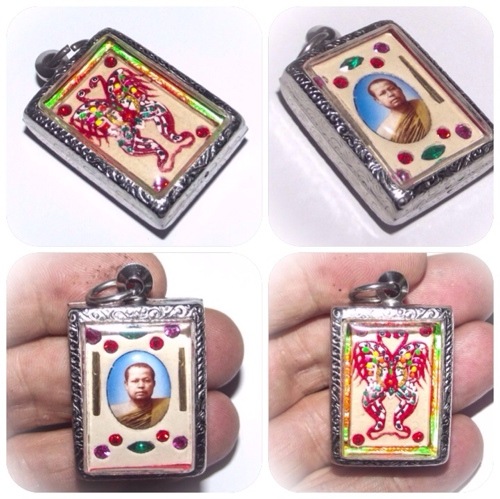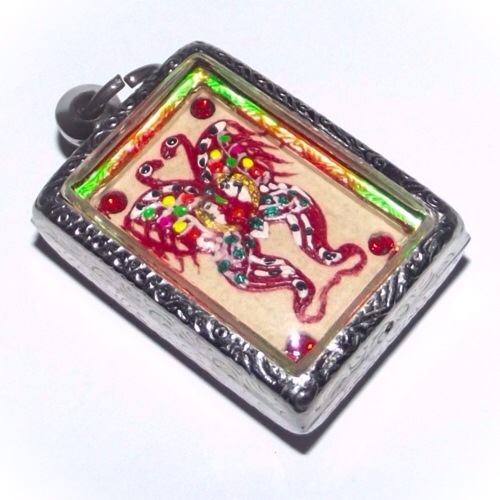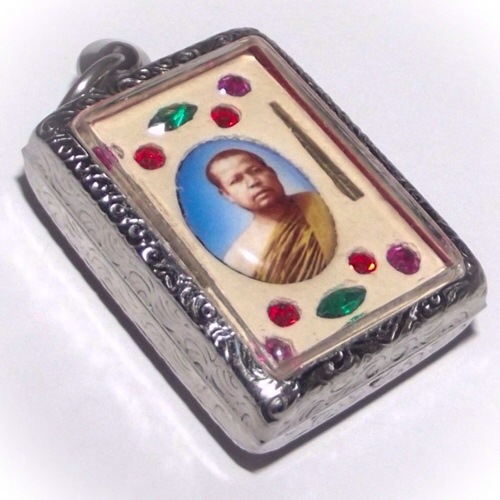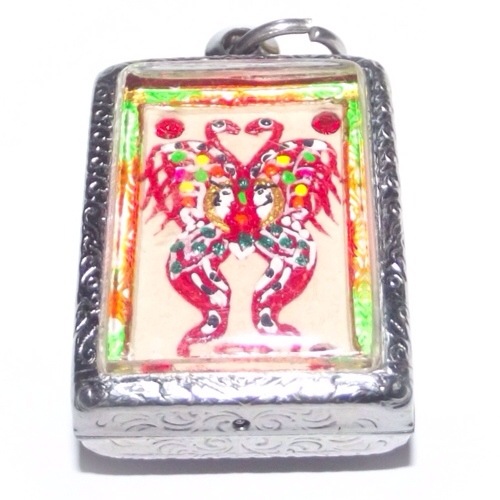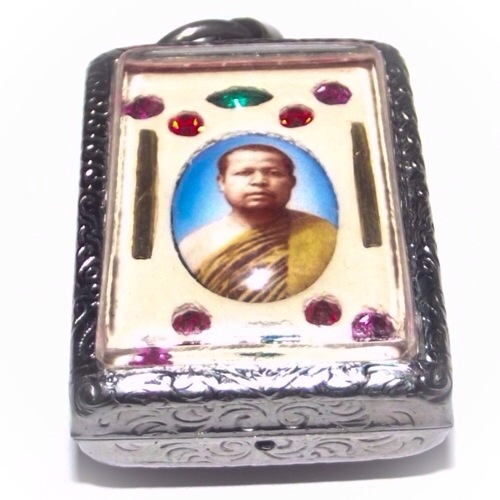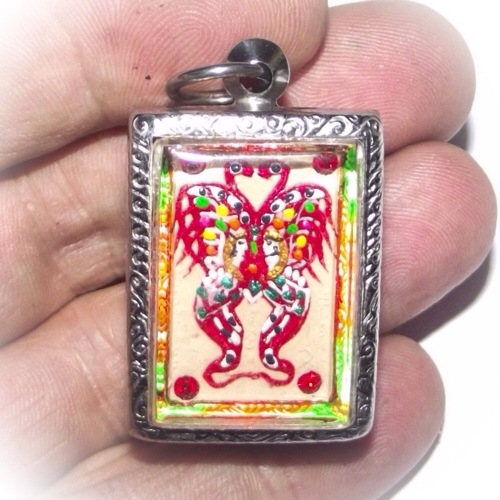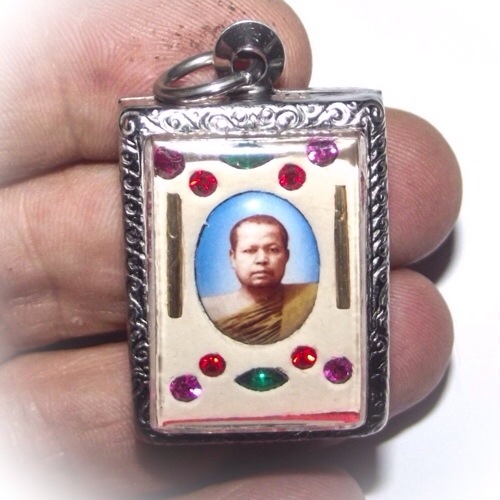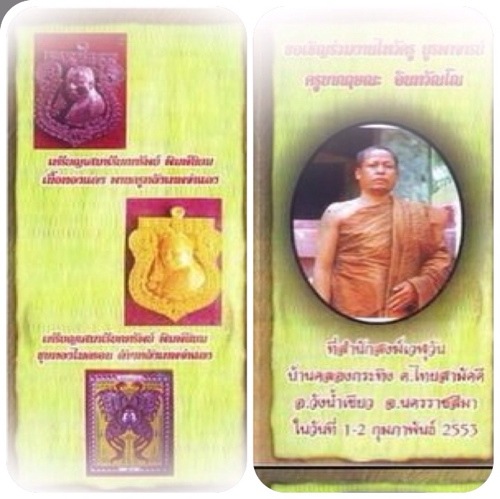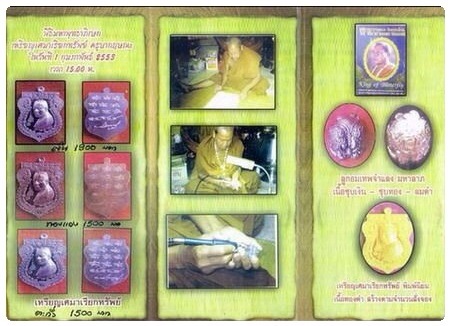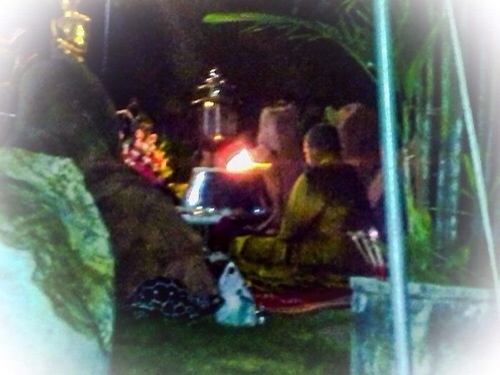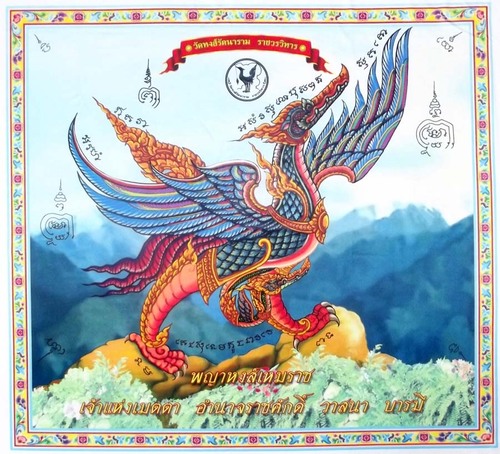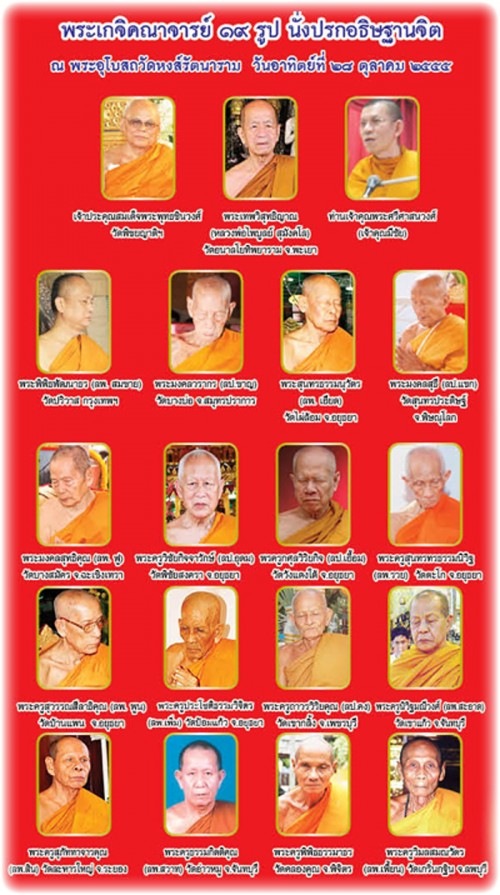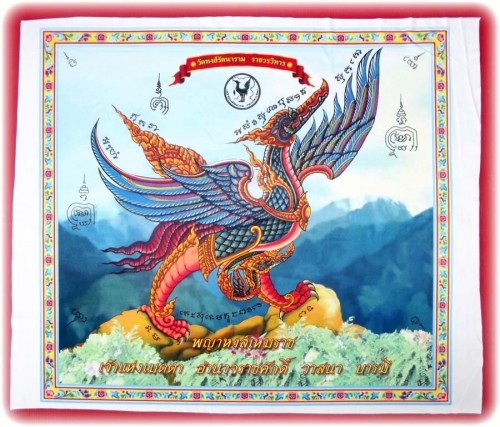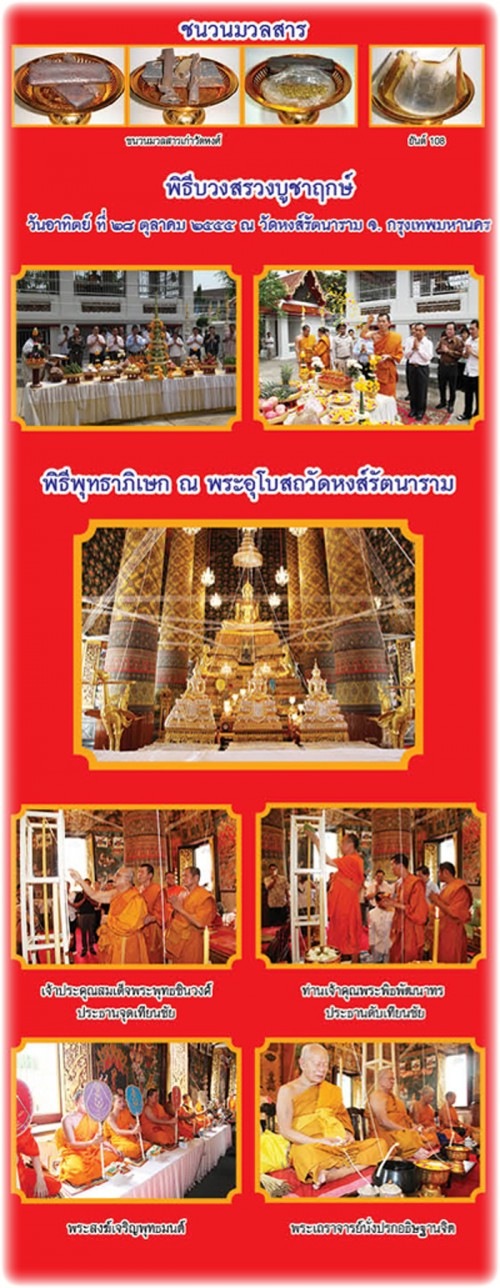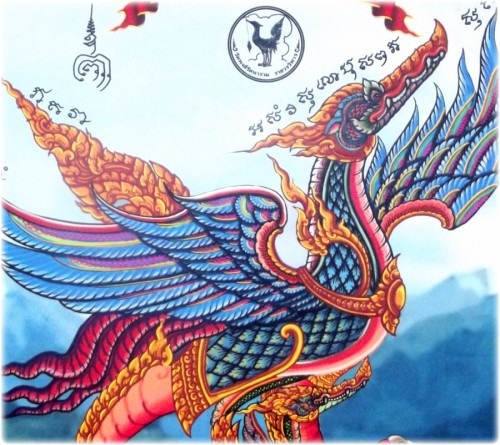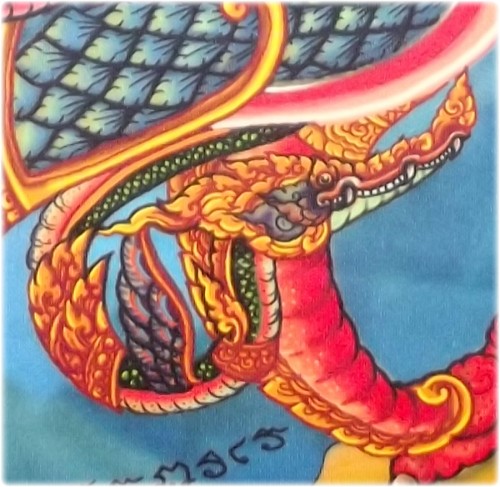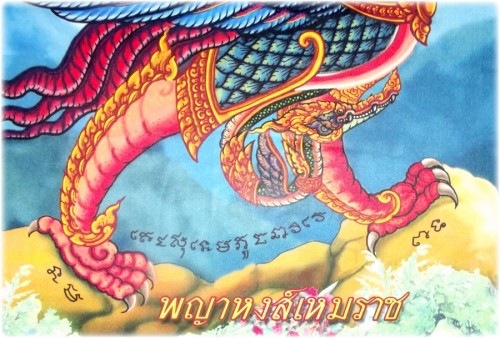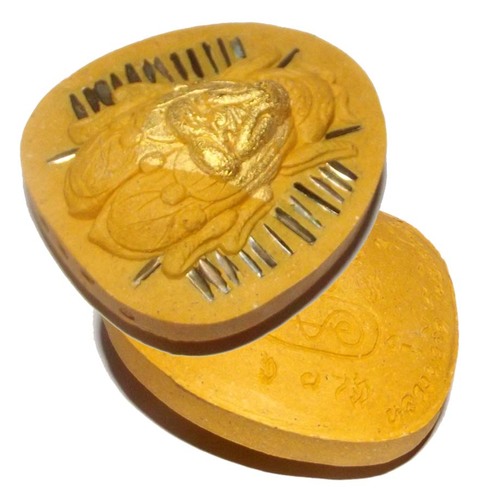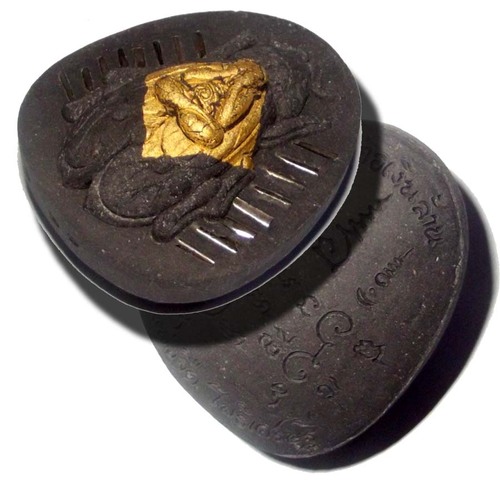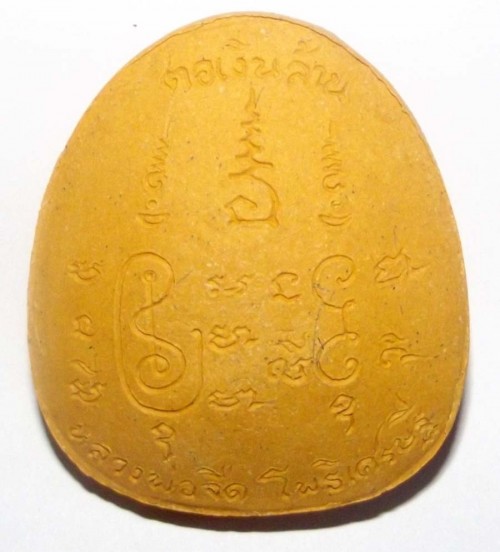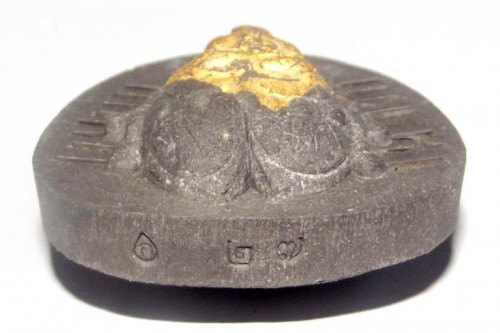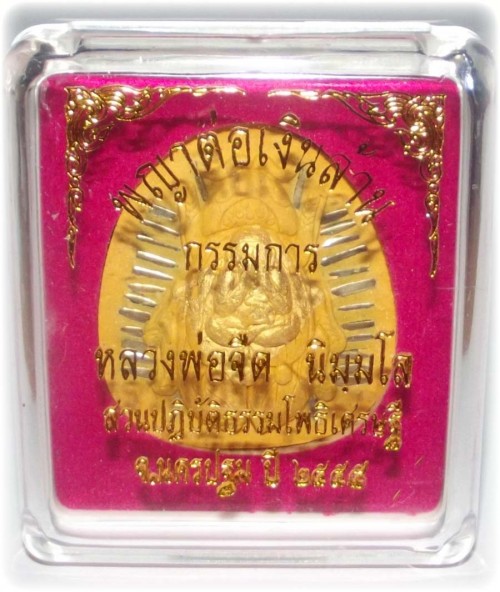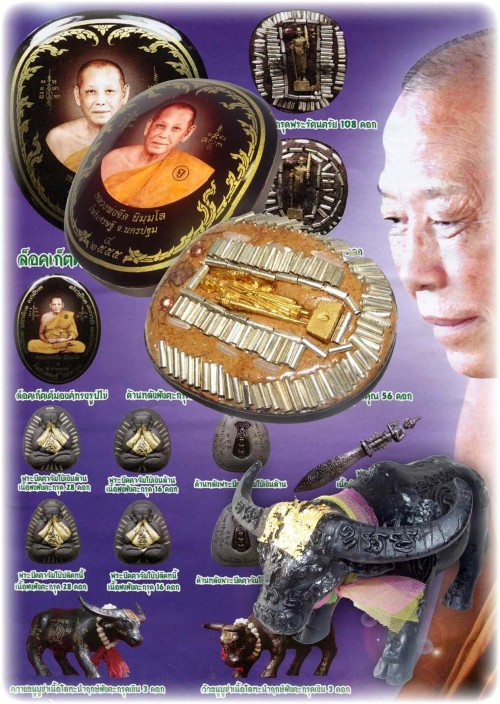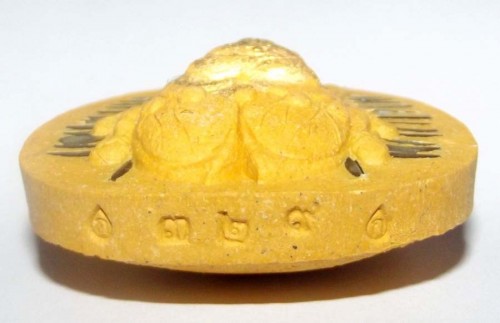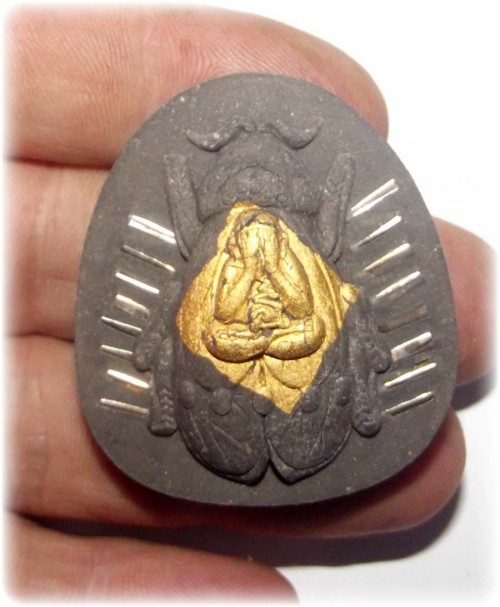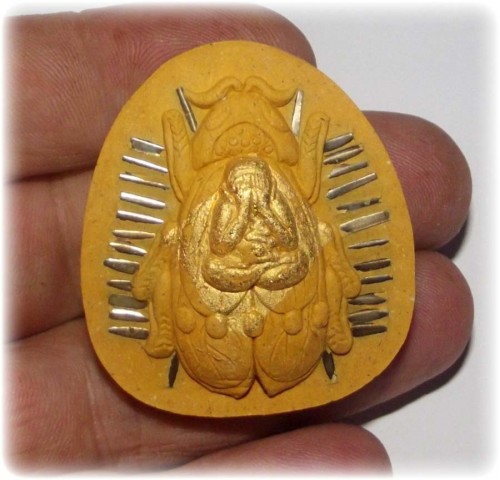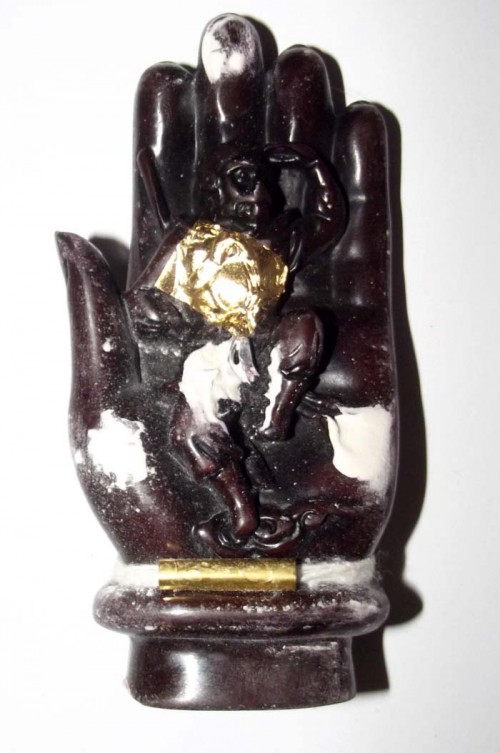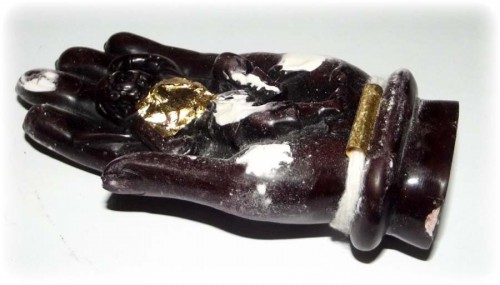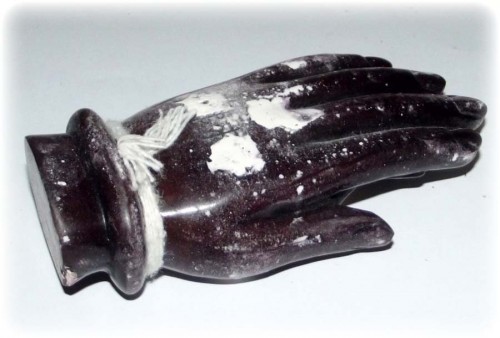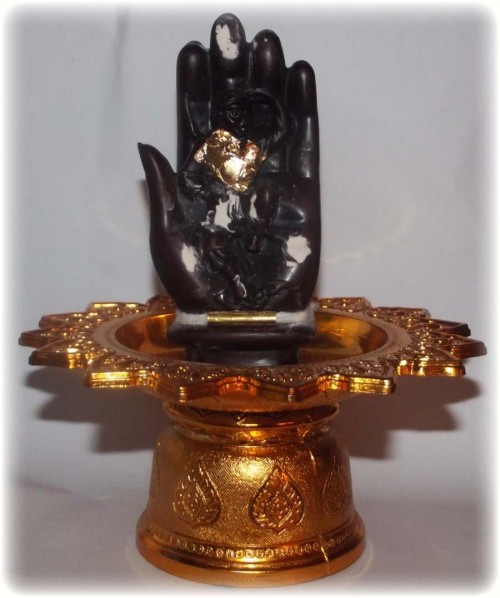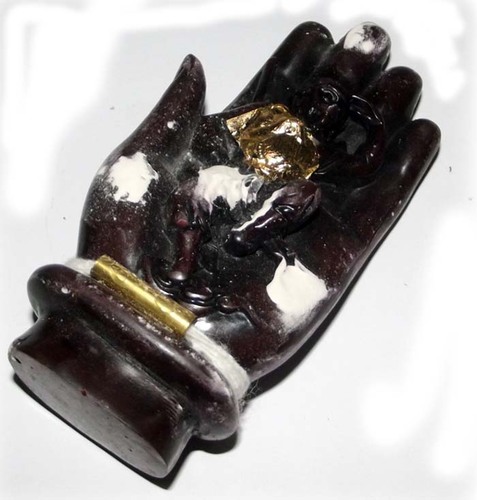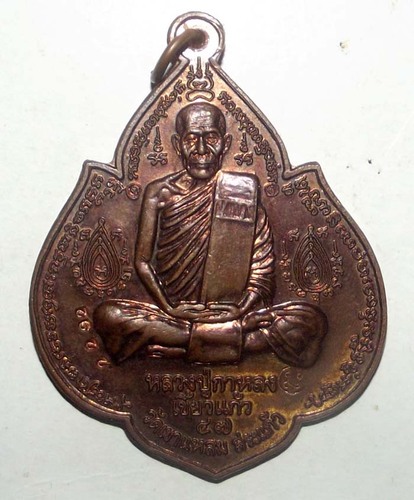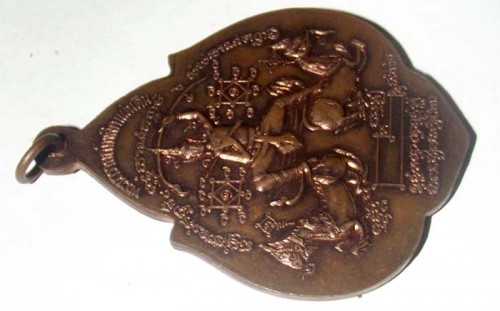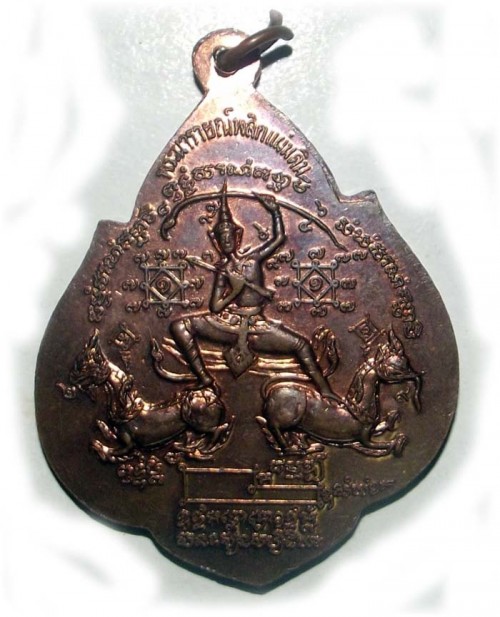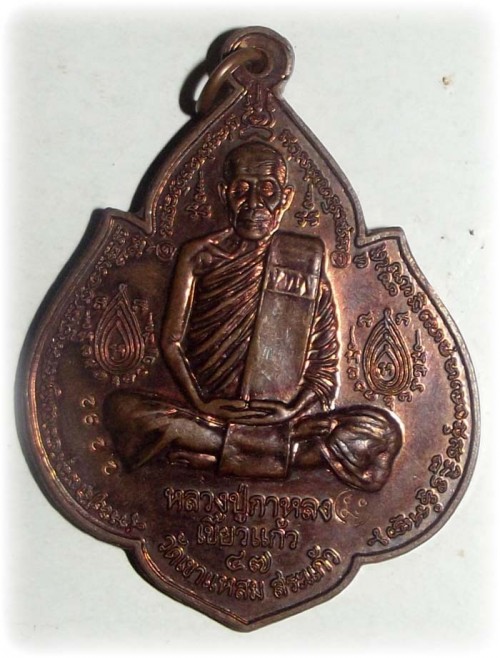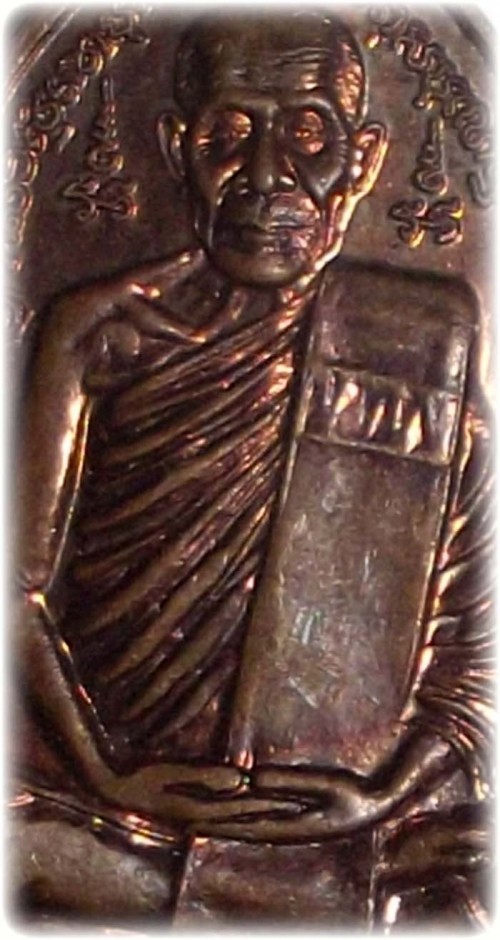Presenting a rare and unusual Thai Buddhist Amulet; The Rian Gai Fa (Paya Gai Gaew Crystal Cockerel) Pim Yai Ongk Kroo Medallion Amulet – this particular exhibit being in Solid Silver with Green Rachawadee Animals – LP Suang 80th Anniversary Edition in 2556 BE, with Only 80 amulets Made. Luang Por Suangs Cockerel Amulets have become not only Legendary and a Tradition of his Amulet Making Wicha, in now its third edition. It is also traditional and meritorious of Luang Por Suang, That he uses his editions of amulets to help other temples in need. In the case of this edition which is a fundraiser To raise funds for the building of a Sala Brian, a building for study, at Wat Tham Prohm Sawad; the Building is for Buddhist monks to study the Dhamma, and the Suttas of the Buddhist Canon. The making of amulets in the image of a Cockerel is rare in Thai Buddha Magic, but has been seen by some of Thailand’s great masters of the past To have been for those few a preferred form of sorcery, That is not as I need missed as it may at first same in its origins for indeed the cockerel represents the first of the five self enlightened Buddhas of this universes Lifespan, ‘Pra Kakusanto’ or ‘Kakusanta Buddha’.
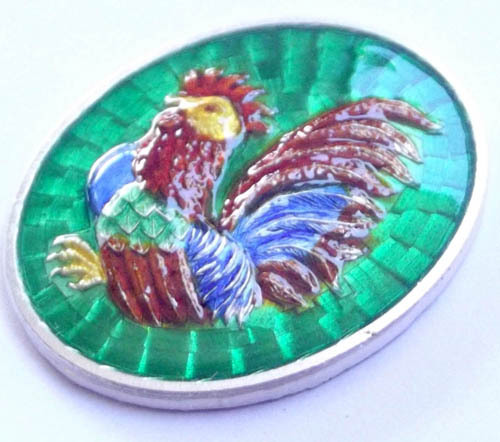
a
One famous master, whose amulet of a Buddha sitting on top of a Cockerel, Was of course the great Luang Por Parn, of Wat Bang Nom Kho, in Ayuttaya, and his Loksit ‘Luang Por Ruesi Ling Dam’. Luang Por Suang has created this edition All special coin amulets in sacred solid silver With a Luxurious glaze of ‘Ya Rachawadee’ Enamels To deco rate the surface of the solid silver coins with color and Lustre of Luminosity, Which only the Authentic Ya Rachawadee can bring to the surface of sacred metal coin amulets.
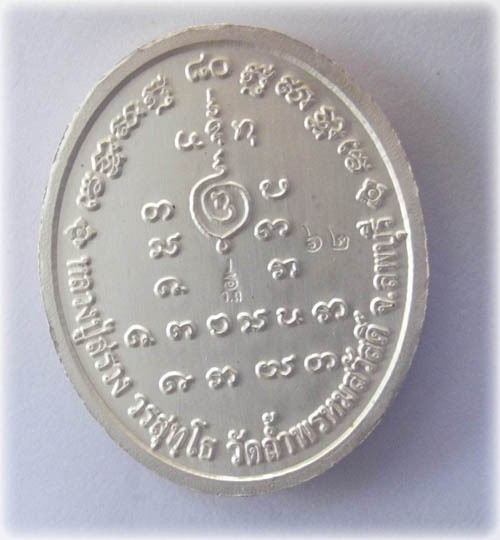
The rear face of the amulets have sacred Yantra and Khom Agkhara spell inscriptions embossed, and the name of Luang Por Suang Worasutto, and his temple, Wat Tham Prohm Sawad.

The amulets were made in Pim Yai (large size) and Pim Lek (small size), in two different colored enamels; blue, and green. The coins were made in solid silver, as well as in albaca and sacred brass with enamelled image. The albaca and brass versions had no back surface enamels behind cockerel though, which is only applied to these Ongk Kroo models. They were also released in plain sacred metals without enamels. It is notable for students of the collectorship scene, that only the Ongk Kroo models of this edition have taken on fanaticism and become highly praised collector coins, whereas the other models are still relatively easy to find in circulation.
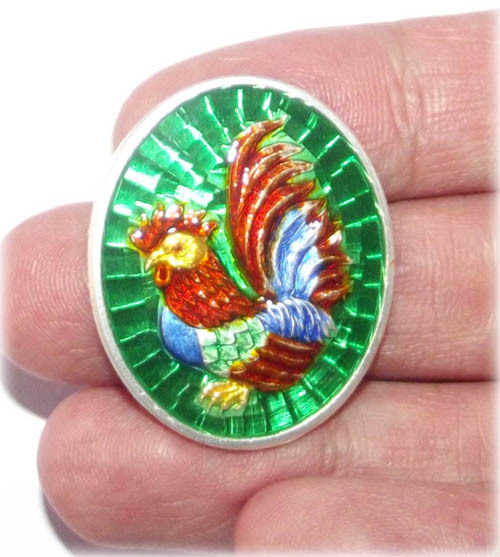
We believe however, that Sacred is Sacred, and that collector-ship and speculation of collector class amulets is not related to sacred value, or Miracle power. An Ongk Kroo or a standard versions would in principle, as Metallic coins, without sacred herbs or magical ingredients, have the same power. This rule of course, does not apply to sacred powder amulets or oils or Necromancy, where the ingredients used are sometimes different with different price models and also have different levels of power. But in the case of Sacred Buddhist Coin amulets, most of the Miracle power comes from Faith and the Purity of the Monk who blesses them, more than in the metal used to make them.
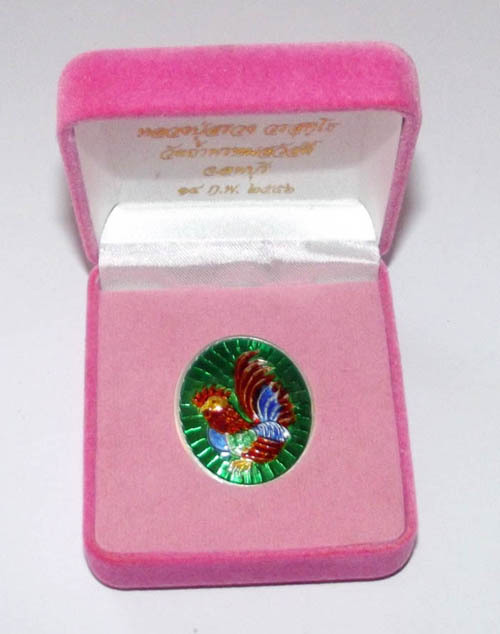
Comes in original felt box from the Temple. Can be encased if wished to be worn.
Still, the Ongk Kroo models are apart from sacred, also a long term worthwile investment which will increase in both sacred, Monetary and Collector scene value, as well as providing the essential Blessings and Magical aid to the Devotee. Maha Lap, Maha Pokasap, Metta Mahaniyom, Kaa Khaay; This amulet possesses all of the aforesaid blessings, for wealth increase, happy social and professional environments, great treasures, gifts and successful profession. Great Mercy Charm for Business and Social Seduction.
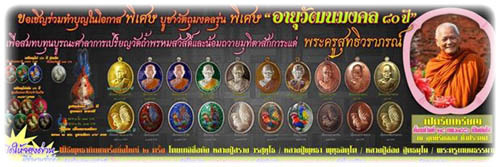
As Luang Por Parn and LP Ruesi Ling Dam were the Masters of Celestial Cockerel (Gai Fa) amulets, in the present Era, it is Luang Por Suang who is second to none in this Wicha. LP Suang has inherited Wicha from some of History’s Great Masters such as Luang Por Khom of Wat Phai Rong Wua, Luang Por Khaeg of Wat Huay Khao (Supanburi Masters), and learned Mastery of Kammathana (Mastery of Kammathana is almost a Prerequisite to Psychic Power), with some of the Masters of the time; Luang Phu Khaw Analayo, Luang Phu Kam Dee, Luang Por Der, Luang Phu Taes Taep Rangsri, Luang Phu Chorp, and the great Kammathana Master Luang Phu Fan Ajaro.
Buddha Abhiseka
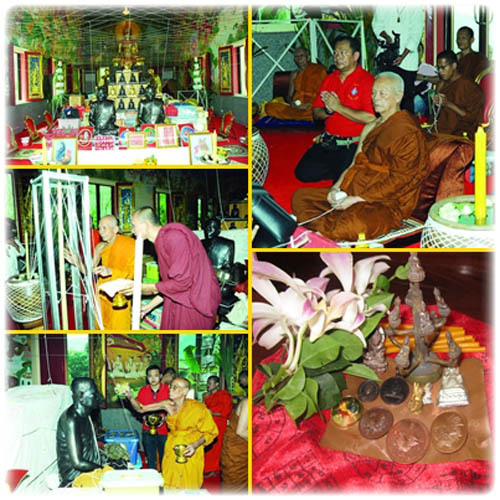
Puttapisek, or ‘Buddha Abhiseka’ empowerment and Blessings Ceremony was performed at Wat Tham Prohm Sawad in Lopburi on the 14th of February 2556 BE at 13.09 PM.
This special piece was created by the revered Luang Por Suang to commemorate his 80th birthday, making it a highly collectible and meaningful item, with only 80 ever produced.
Luang Por Suang’s Cockerel Amulets have achieved legendary status, becoming a cornerstone of his unique amulet-making tradition (Wicha). This edition marks the third iteration of these powerful talismans, further solidifying their significance. True to Luang Por Suang’s benevolent nature, this special edition serves a noble purpose: raising funds for the construction of a Sala Brian at Wat Tham Prohm Sawad. This Sala Brian will provide a dedicated space for Buddhist monks to diligently study the Dhamma and the sacred Suttas of the Buddhist Canon, contributing to the preservation and propagation of Buddhist teachings.
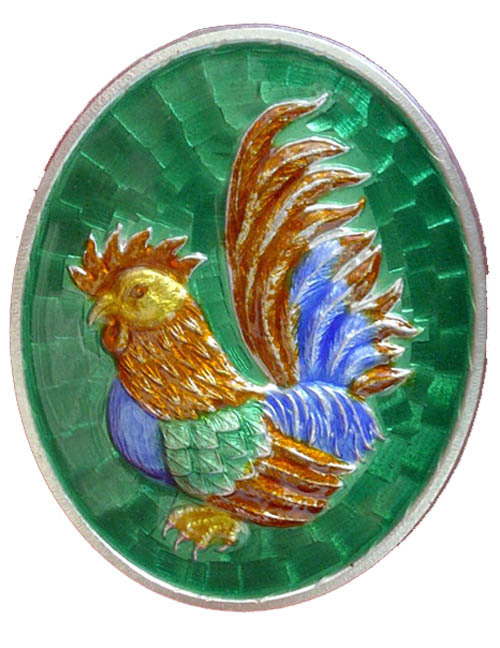
The creation of amulets in the image of a cockerel is a rare practice within Thai Buddhist Magic, setting these amulets apart. However, this unique symbolism has been favored by select past masters of high esteem, indicating its profound power. While the symbolism might seem unusual at first glance, its origins are deeply significant. The cockerel represents none other than the first of the five self-enlightened Buddhas of this universe, ‘Pra Kakusanto’ (Kakusanta Buddha). This connection elevates the amulet beyond a mere charm, imbuing it with the potent energy and blessings of this primordial Buddha. This amulet is not just a beautiful object; it’s a tangible link to ancient wisdom and a powerful tool for spiritual growth.
Kakusanta Buddha is not, as many believe, one of the Five Dhyani Buddhas. He is considered to be one of the seven ancient Buddhas who appeared before Gautama Buddha in previous cycles of time. He is said to have lived many eons ago and is associated with the element of earth. The creation of amulets in the image of a cockerel is a rare practice within Thai Buddhist Magic, setting these amulets apart. However, this unique symbolism has been favored by select past masters of high esteem, indicating its profound power. While the symbolism might seem unusual at first glance, its origins are deeply significant within Thai Buddhist tradition. The cockerel, especially in the context of the Kata Gai Thuean chant, represents Kakusandha Buddha (Pra Kakusanto), the first of the five self-enlightened Buddhas of this current cosmic era.

This connection is a key element in understanding the power and significance of these amulets. This association is not as widely known in other Buddhist traditions, but it holds particular importance within Thai Buddhist beliefs, where Kakusandha Buddha is sometimes depicted with a cockerel. This link elevates the amulet beyond a mere charm, imbuing it with the potent energy and blessings of this primordial Buddha. This amulet is not just a beautiful object; it’s a tangible link to ancient wisdom and a powerful tool for spiritual growth
The Seven Buddhas of Antiquity
In the earliest Pali Buddhist texts, particularly the first four Nikayas, only seven Buddhas, known as the Seven Buddhas of Antiquity (Saptatathāgata), are explicitly named. These Buddhas are:
- Vipassī (lived ninety-one kalpas ago)
- Sikhī (lived thirty-one kalpas ago)
- Vessabhū (lived thirty-one kalpas ago, in the same kalpa as Sikhī)
- Kakusandha (the first Buddha of the current1 good eon)
- Koṇāgamana (the second Buddha of the current eon)
- Kassapa (the third Buddha of the current eon)
- Gautama (the fourth and present Buddha of the current eon)2
Additional Information
The Chakkavatti-Sīhanāda Sutta, found in the Digha Nikaya, further mentions that a Buddha named Maitreya is predicted to arise in the world after the Seven Buddhas of Antiquity.
Subsequently, the Theravada Buddhavamsa, a later text (between the 1st and 2nd century BCE), added twenty-one more Buddhas to this initial list of seven.
Kalpas and Buddhas
According to Theravada tradition, there can be up to five Buddhas in a kalpa, or world age. The current kalpa is believed to have had four Buddhas, with Gautama being the fourth and Maitreya being the fifth and final Buddha of this kalpa. This makes the current aeon a bhadrakalpa, or fortunate aeon.
However, some Sanskrit and northern Buddhist traditions propose that a bhadrakalpa can have up to 1,000 Buddhas, with Gautama and Maitreya still recognized as the fourth and fifth Buddhas of this kalpa, respectively.
Koṇāgamana Buddha
The Koṇāgamana Buddha is of particular interest, as he is mentioned in a 3rd-century BCE inscription by Ashoka at Nigali Sagar, in present-day Nepal. This inscription, written in the Brahmi script, records Ashoka’s visit to the site and his order to enlarge a stupa dedicated to the Koṇāgamana Buddha. Moreover, according to the writings of the Chinese Buddhist monk Xuanzang, Koṇāgamana’s relics were once housed in a stupa at Nigali Sagar, which is now located in the Kapilvastu District of southern Nepal.
